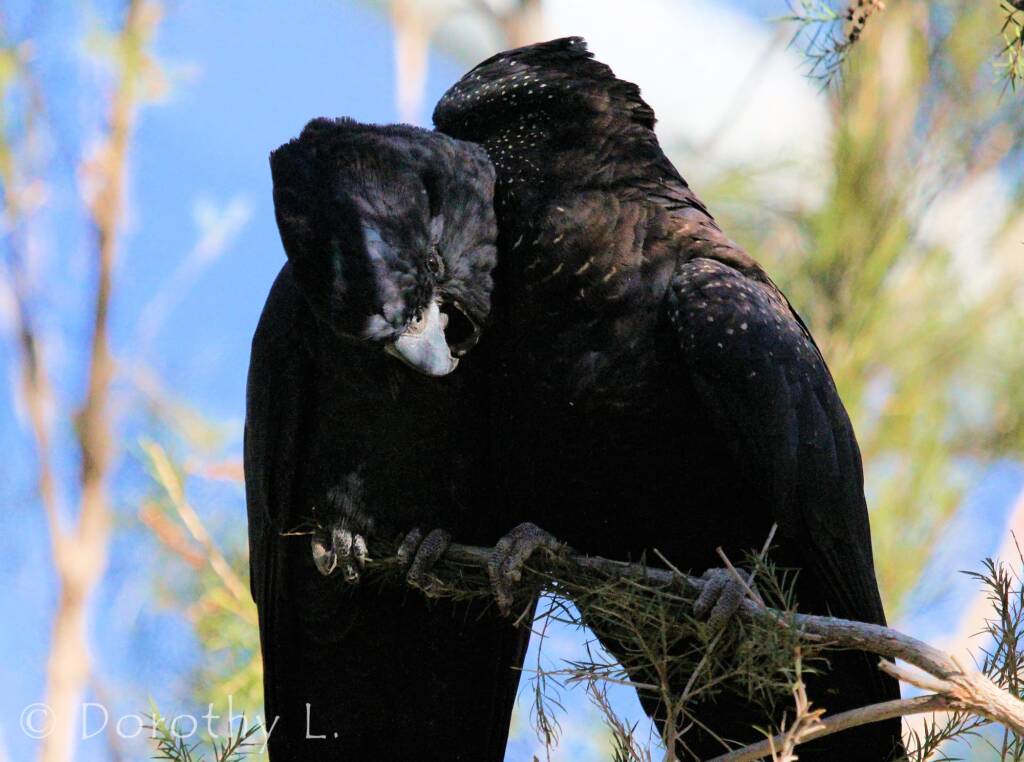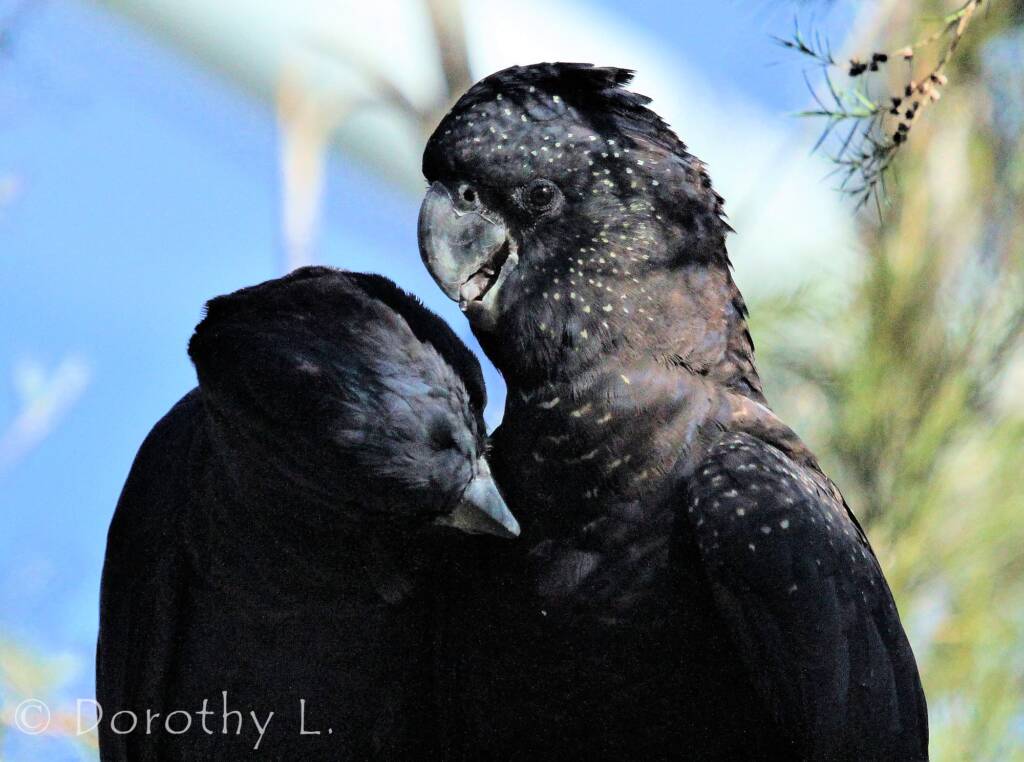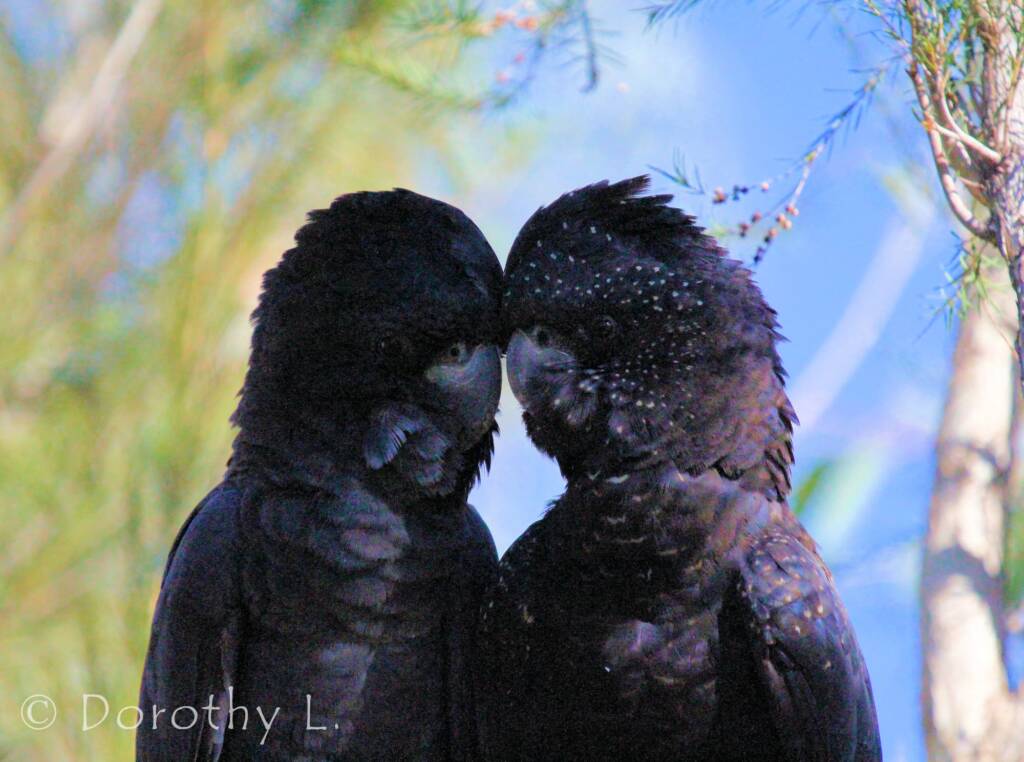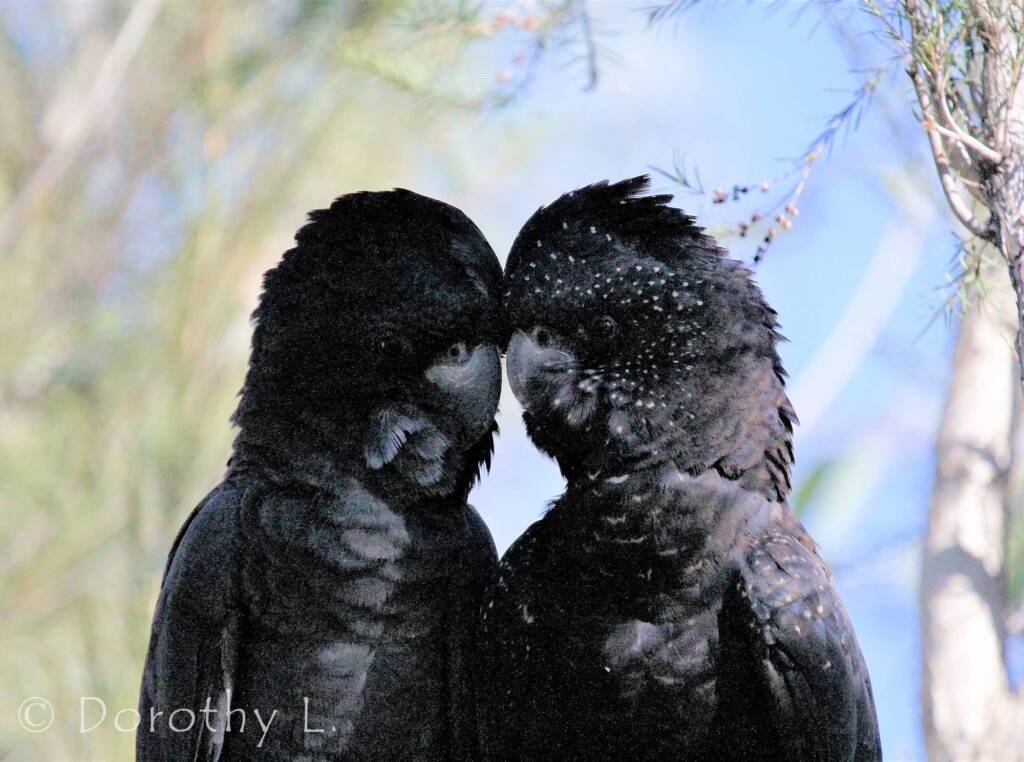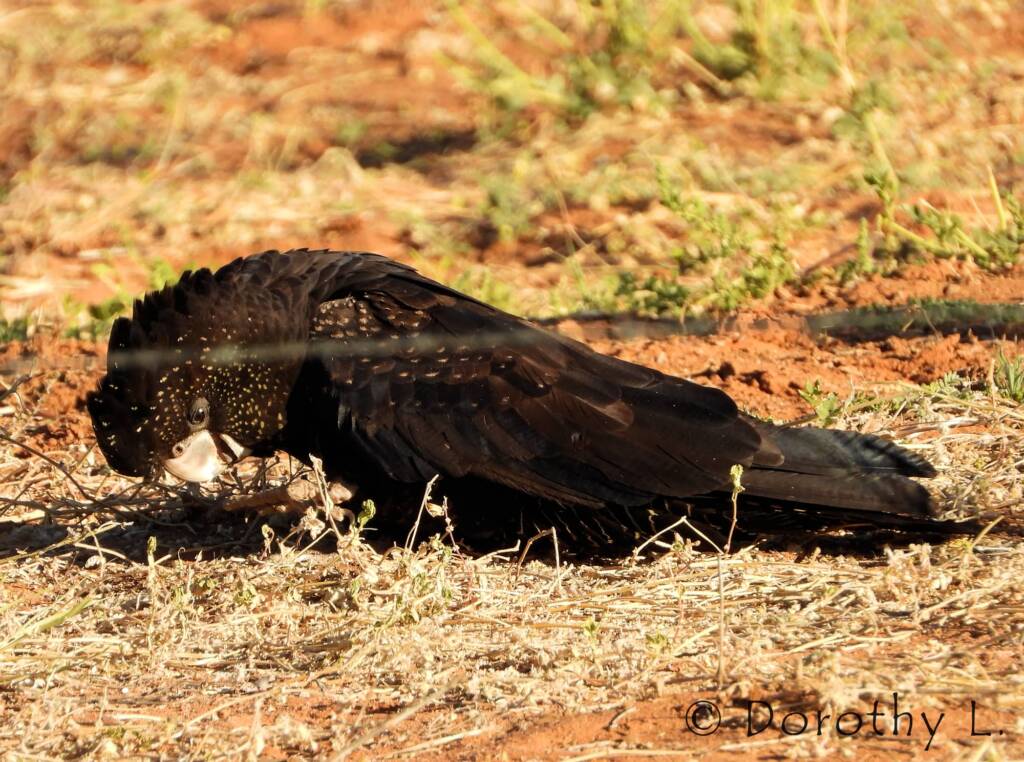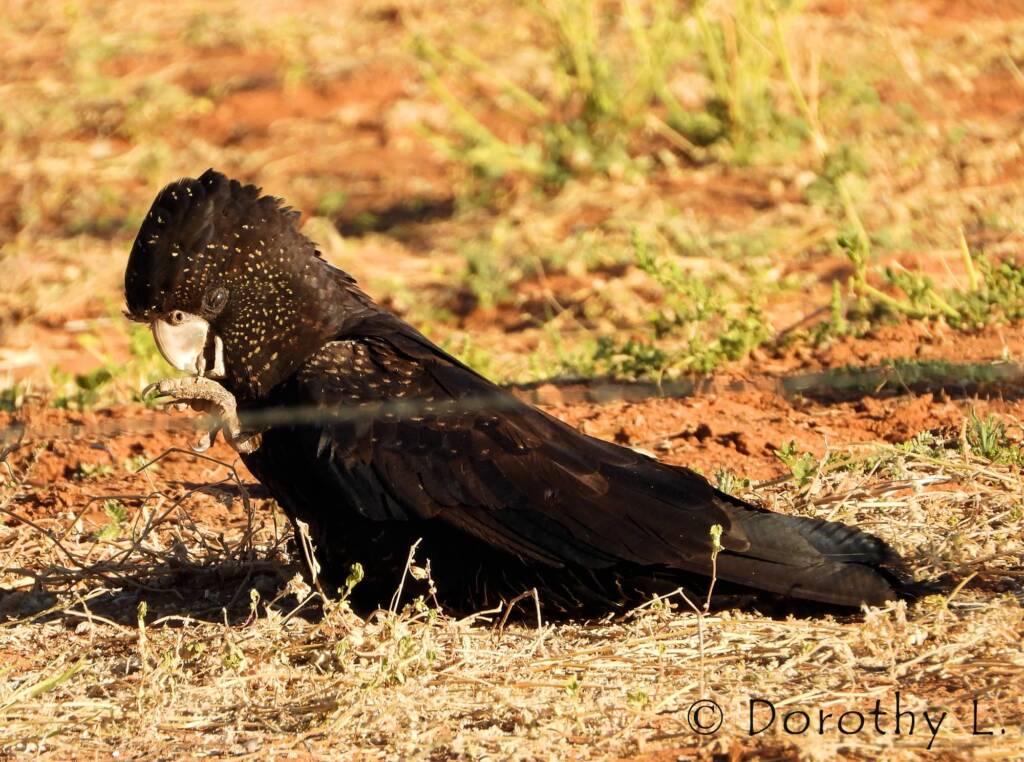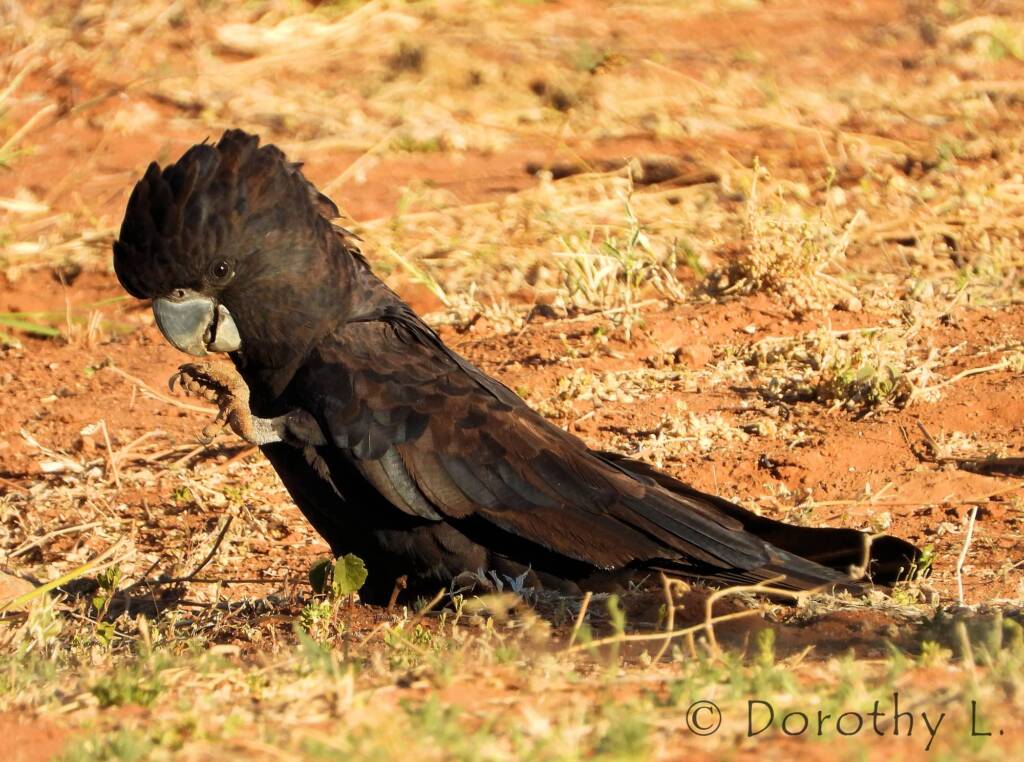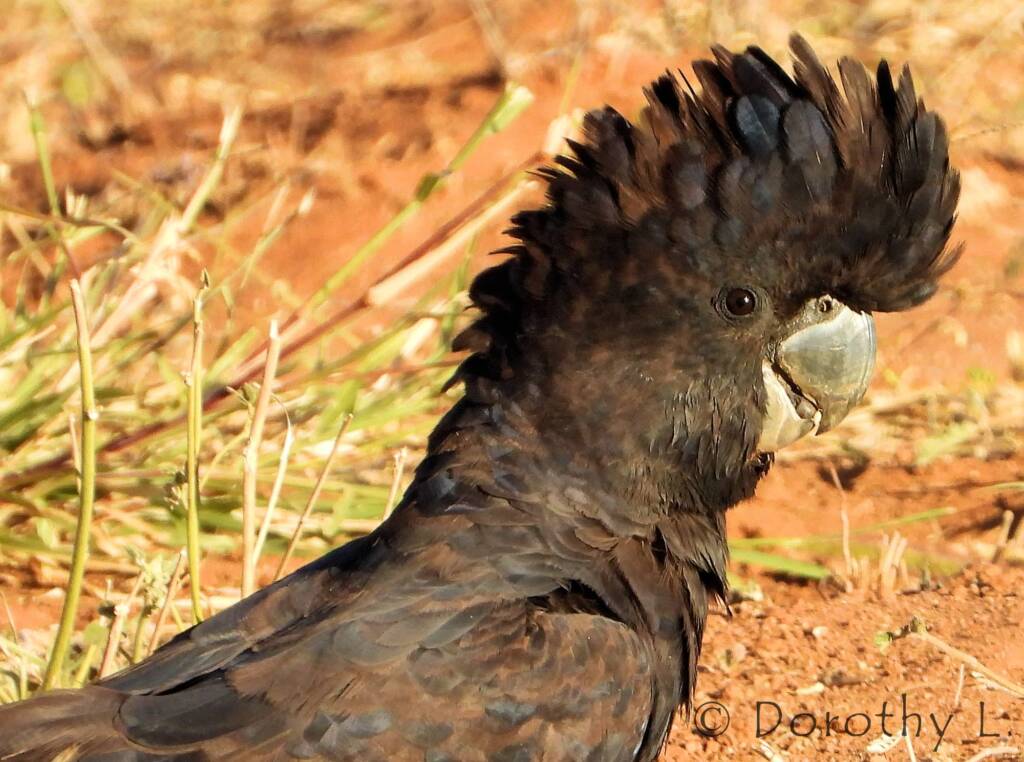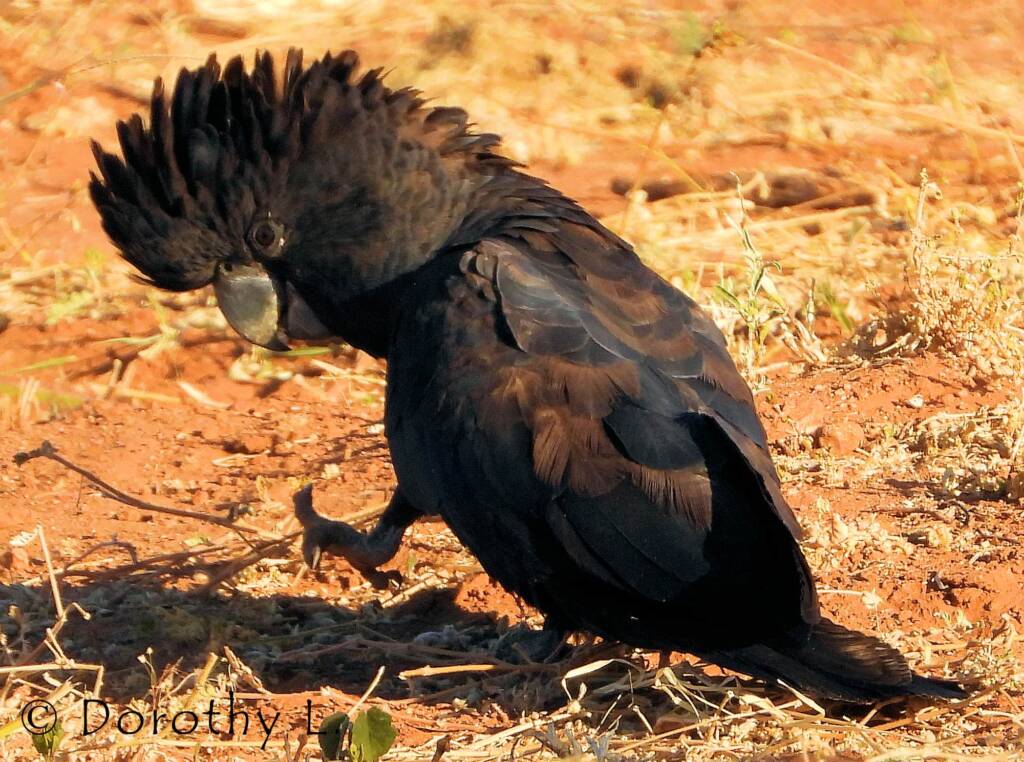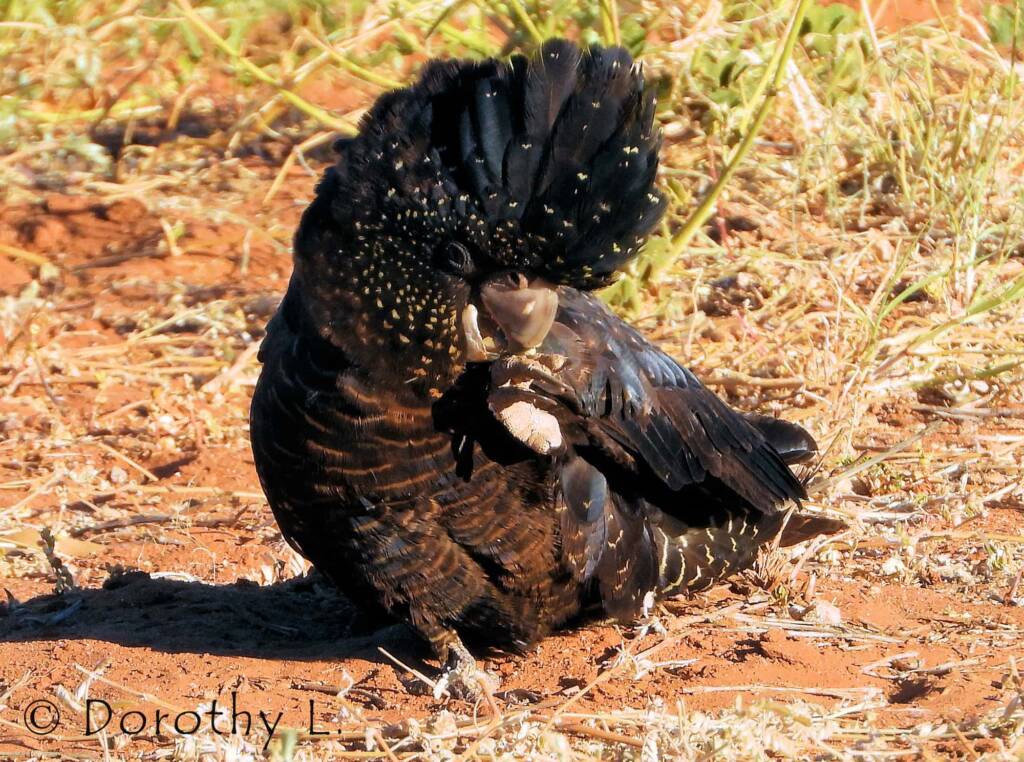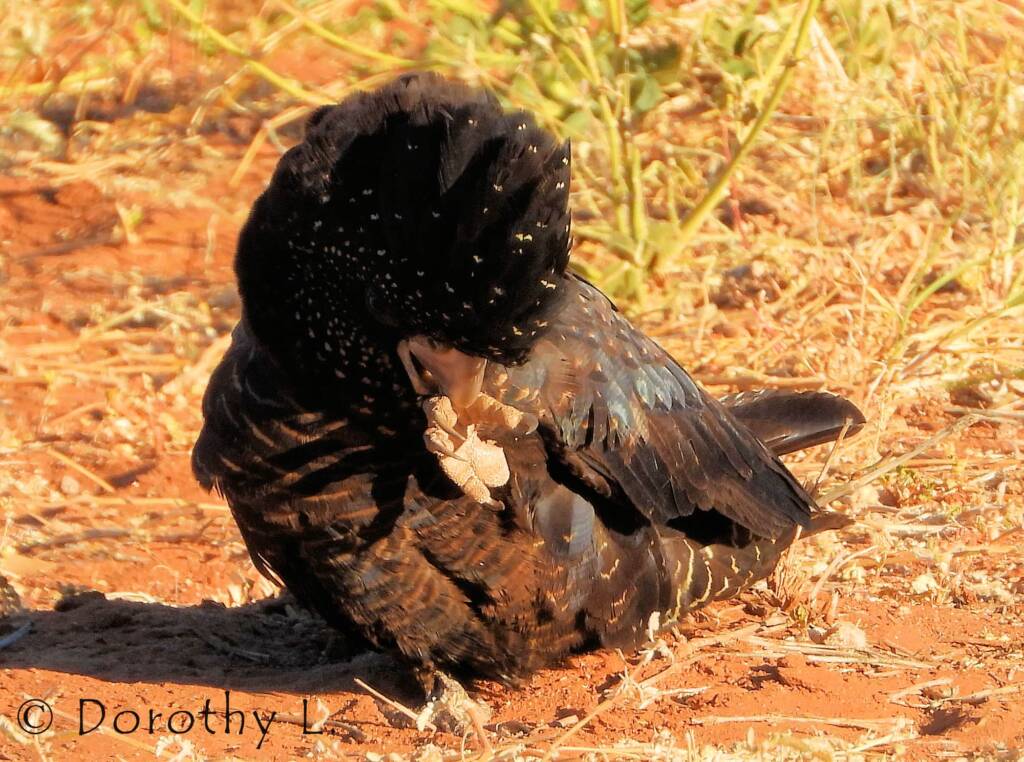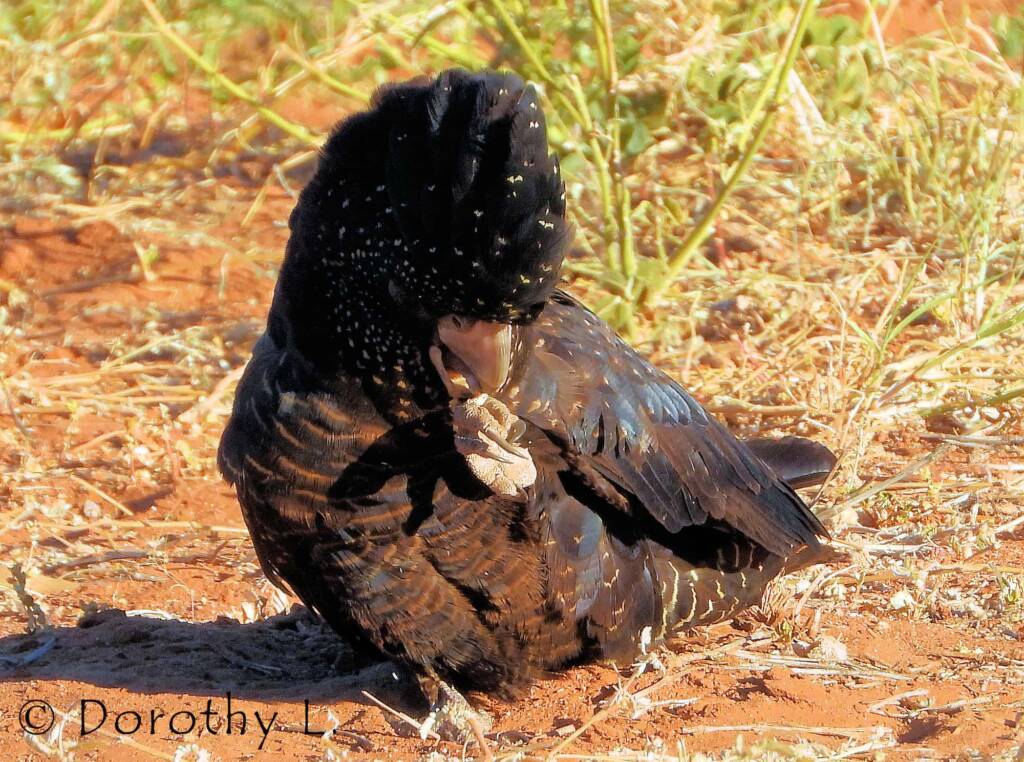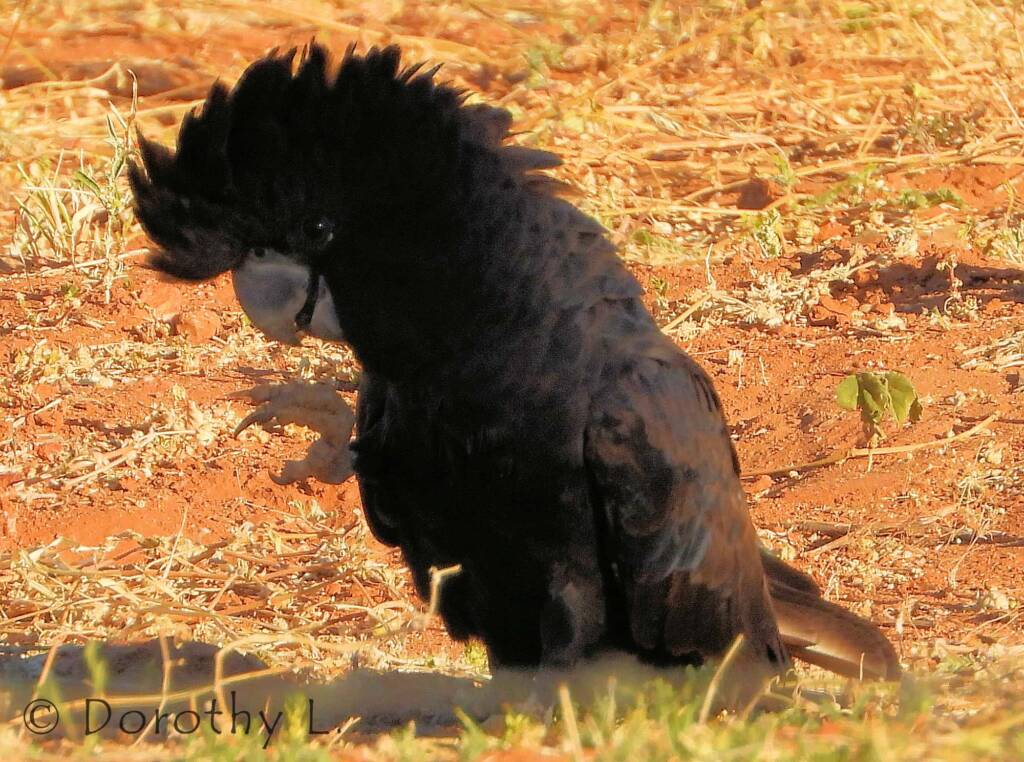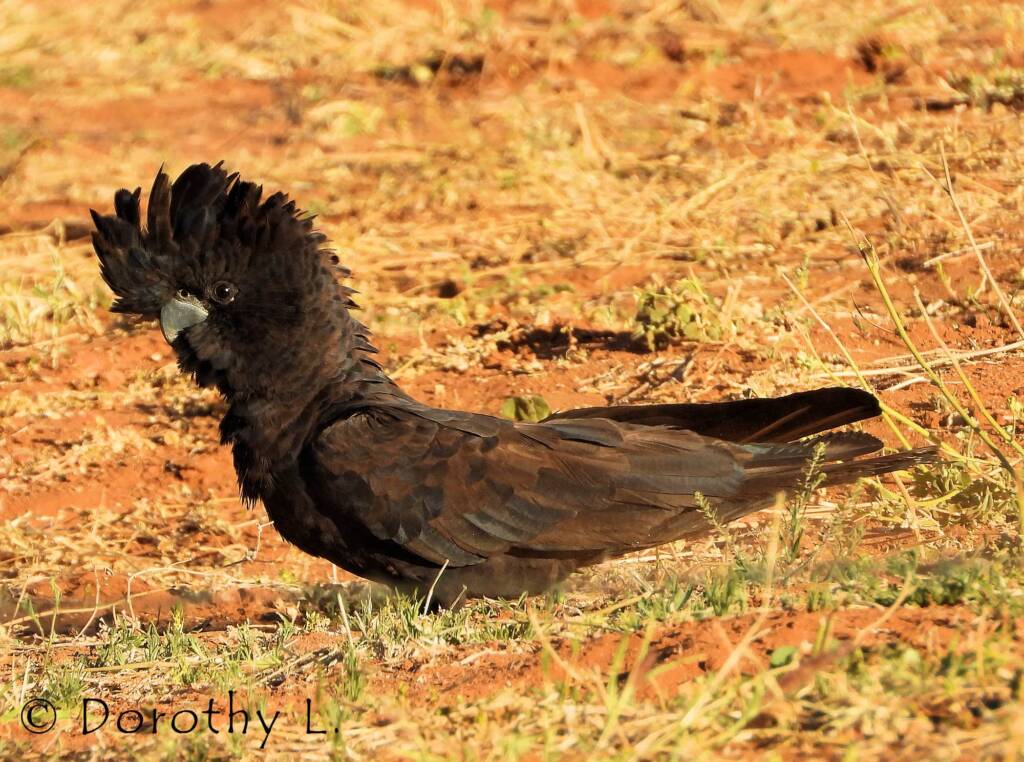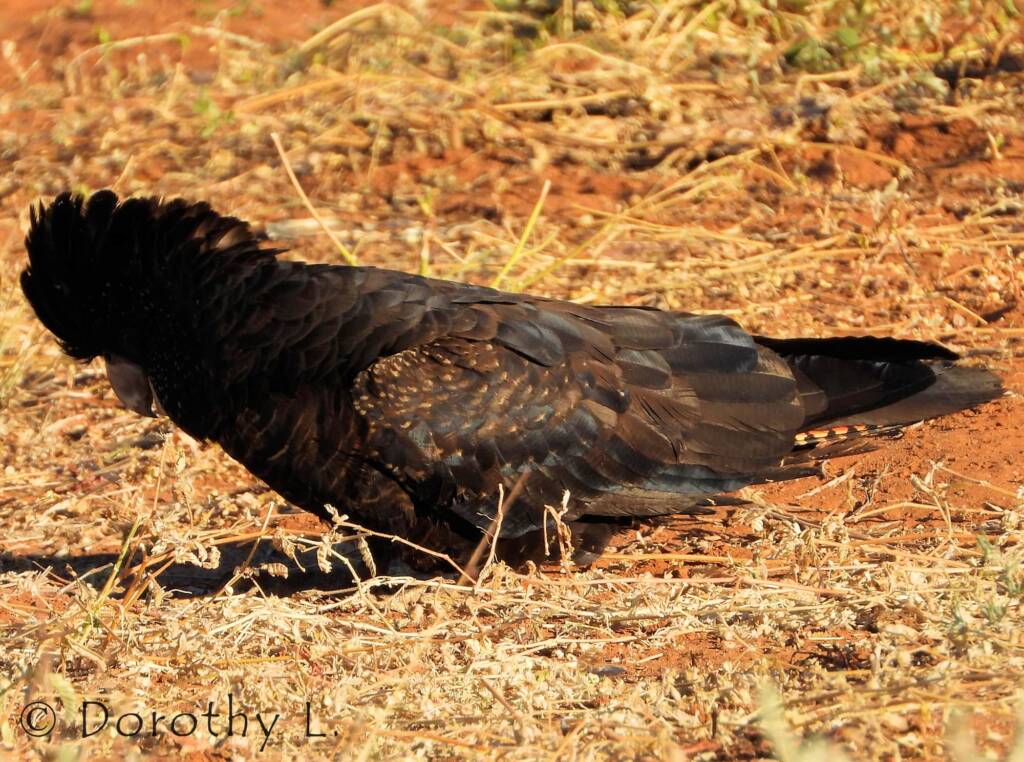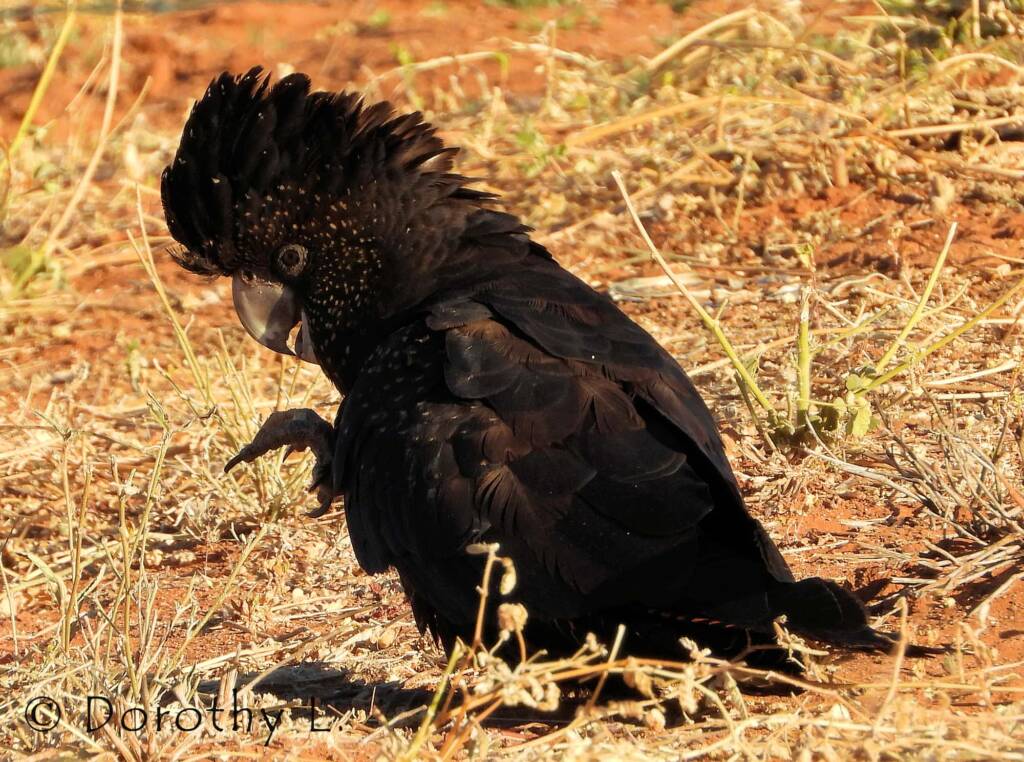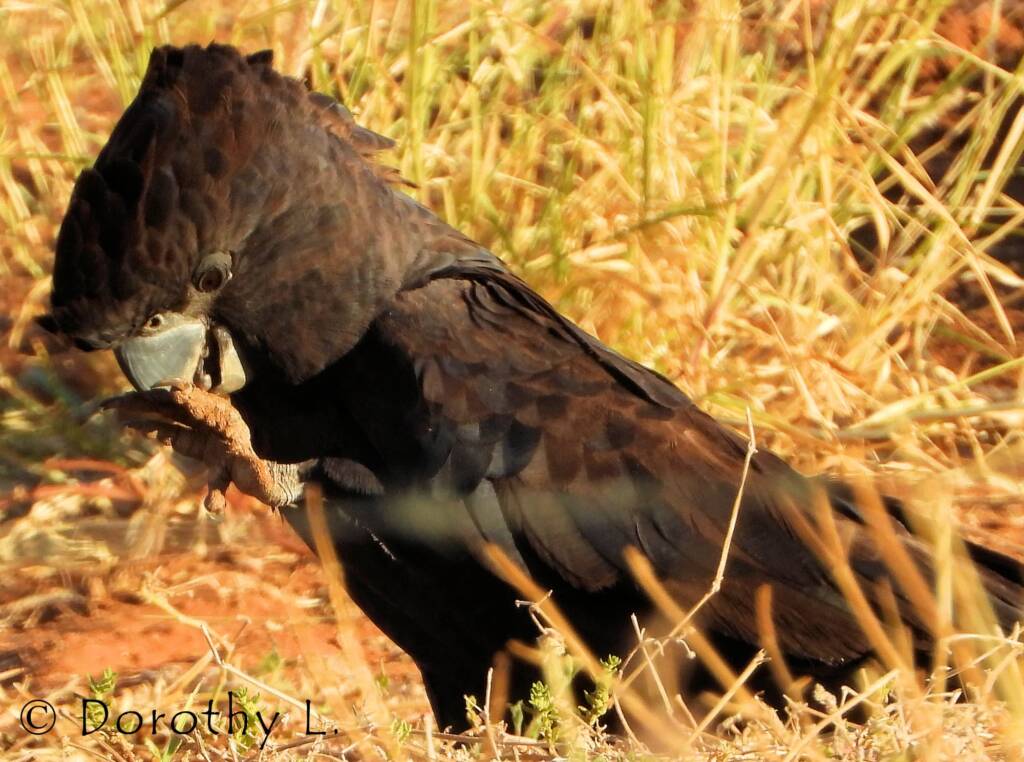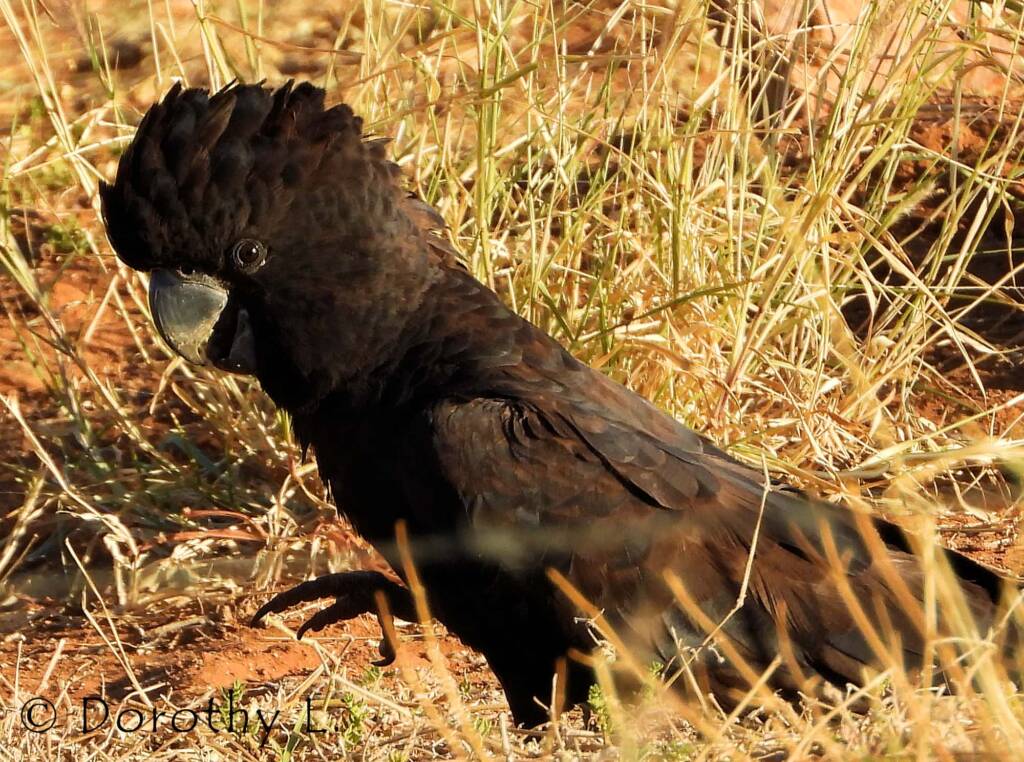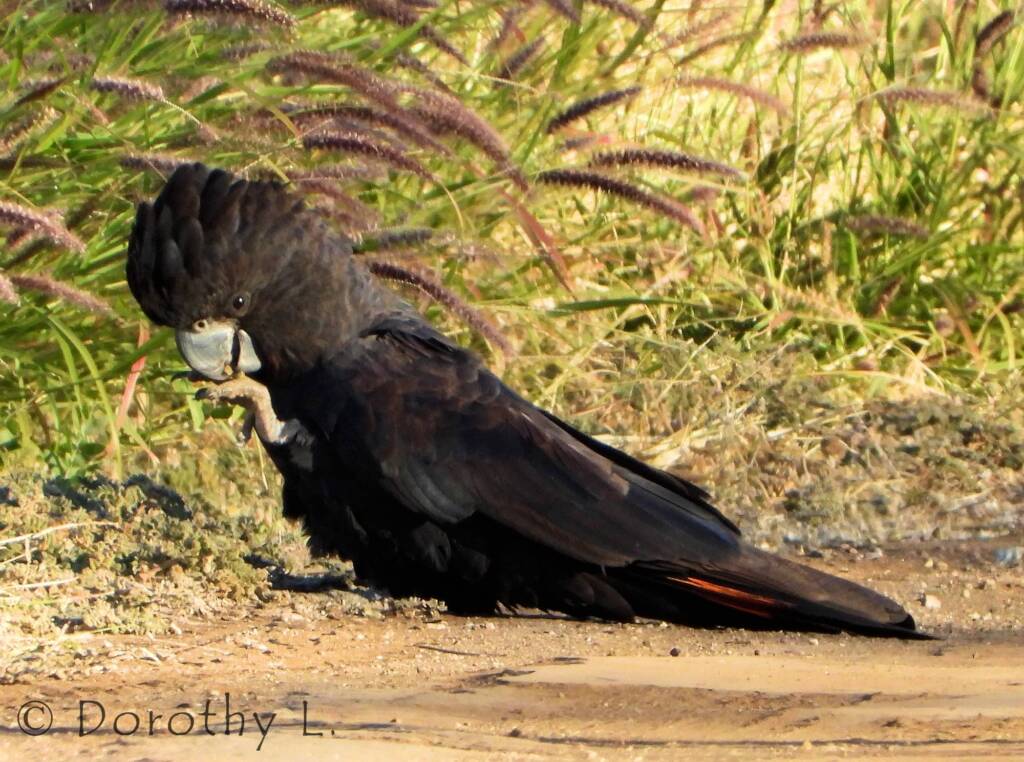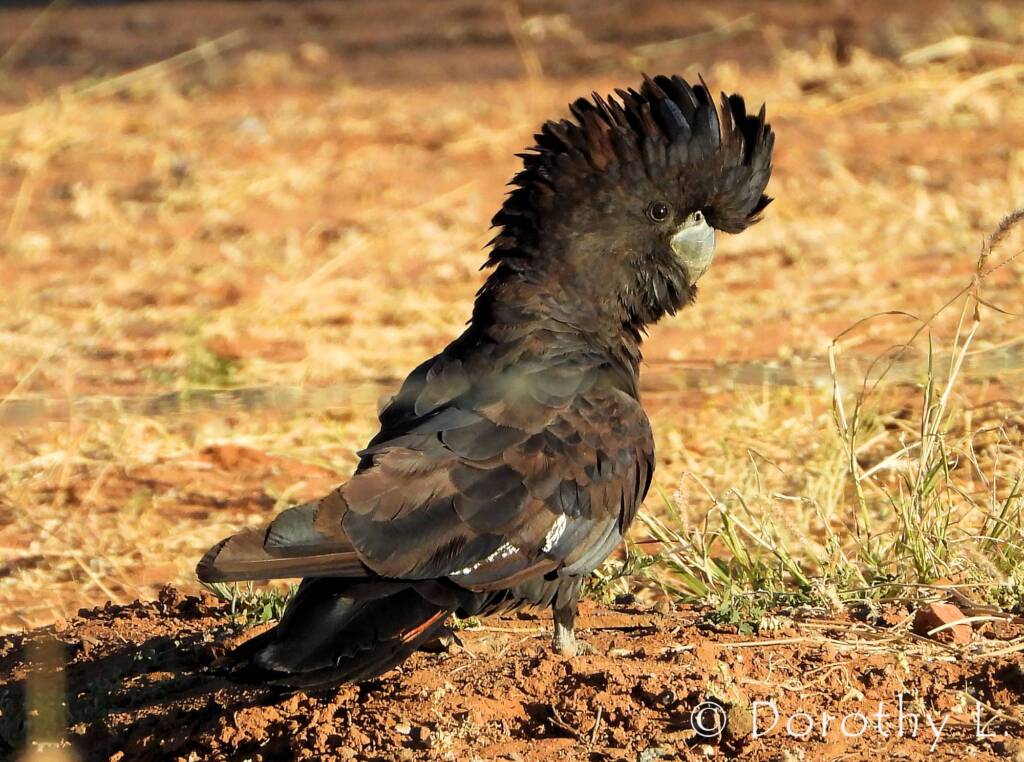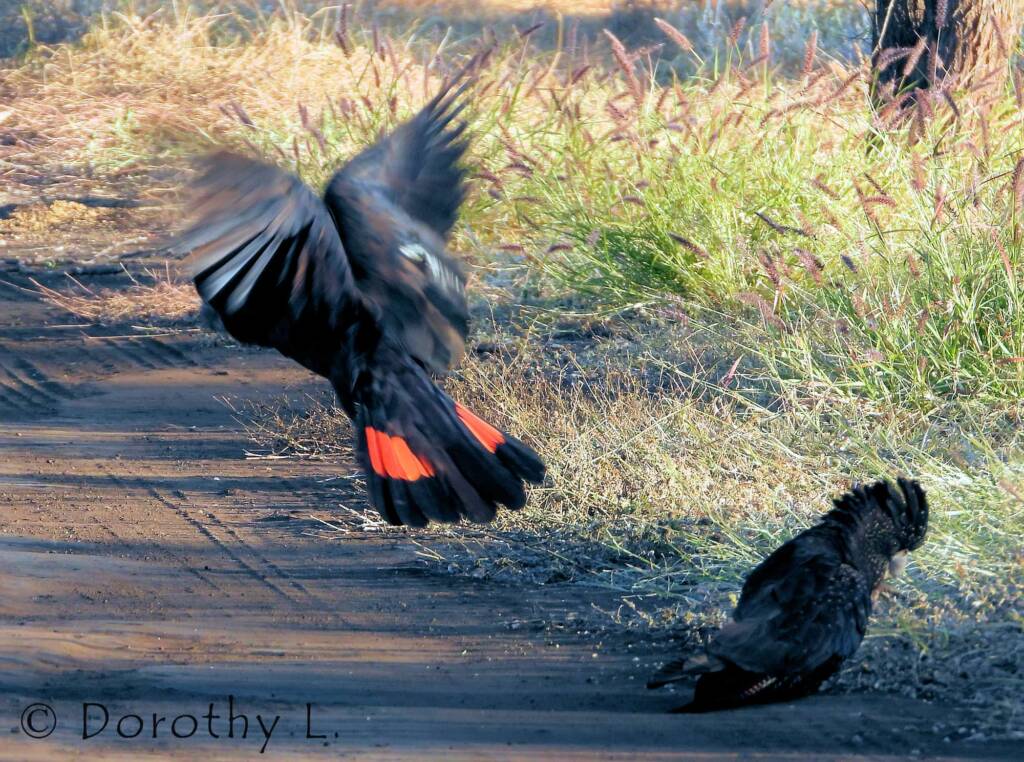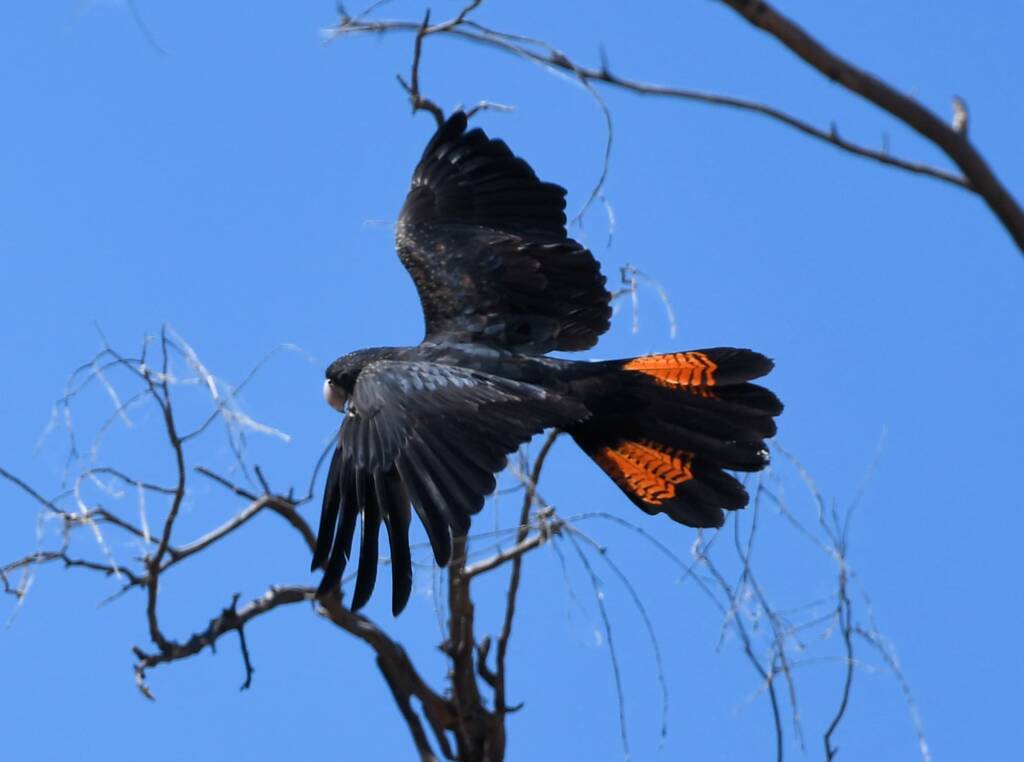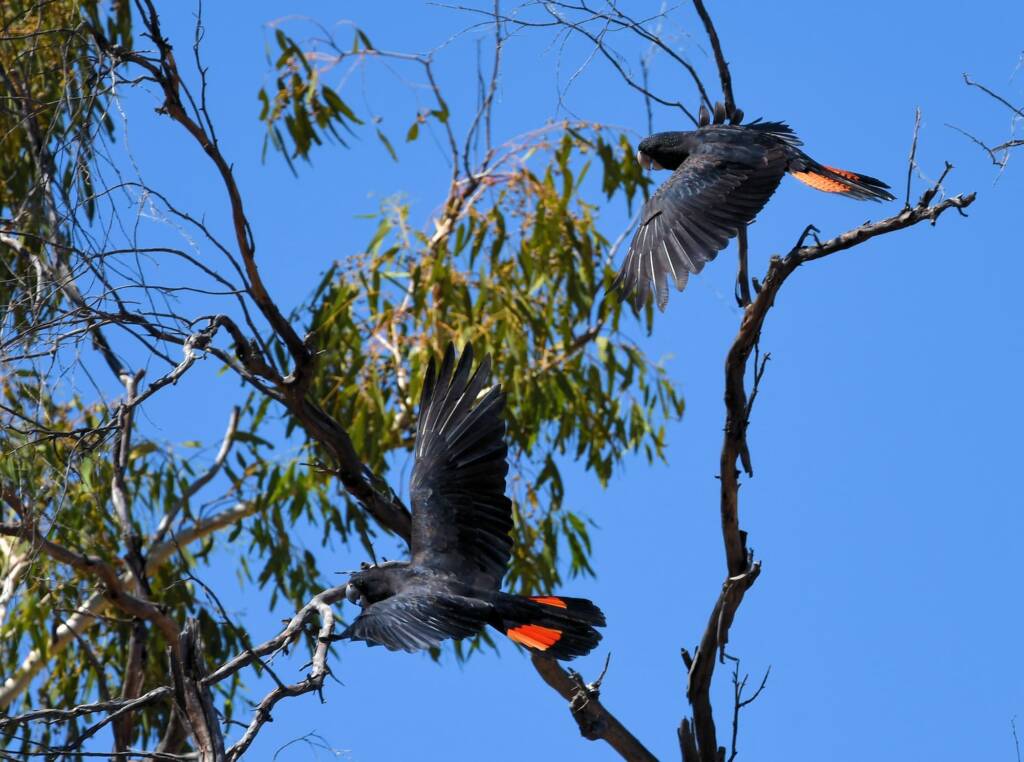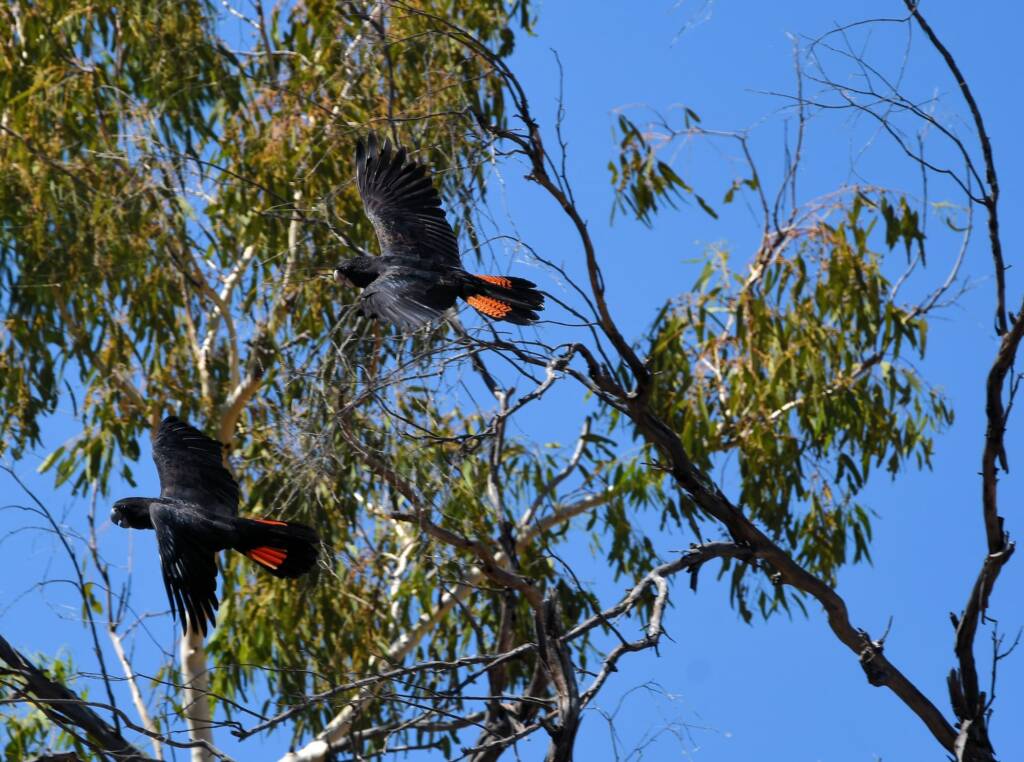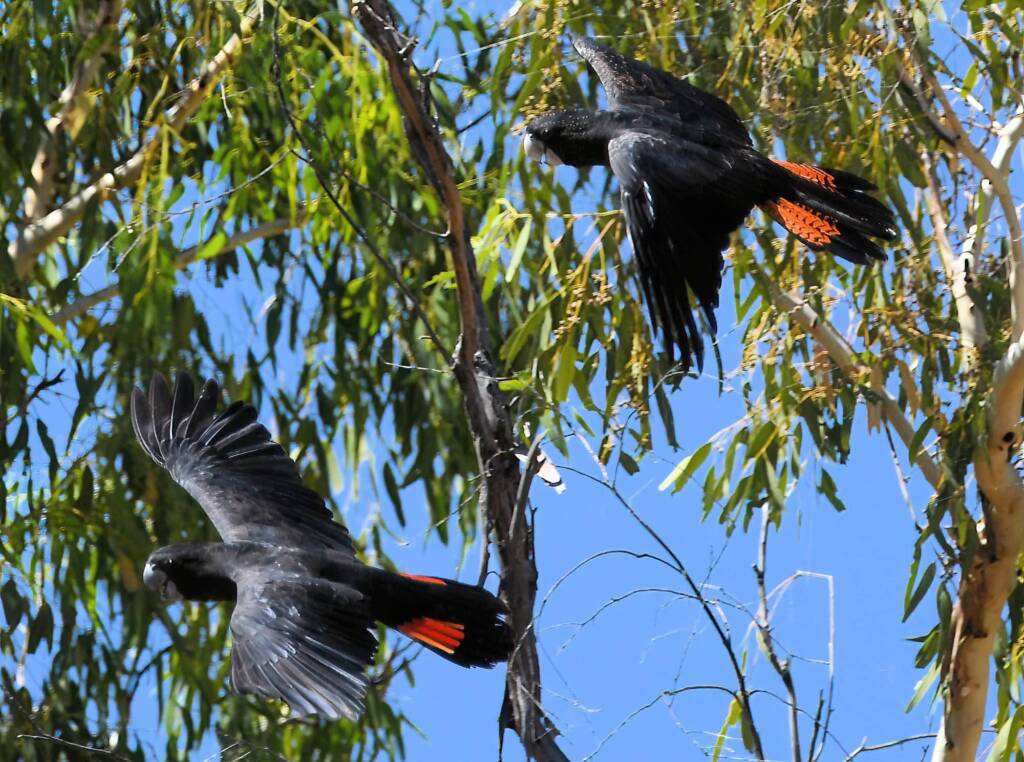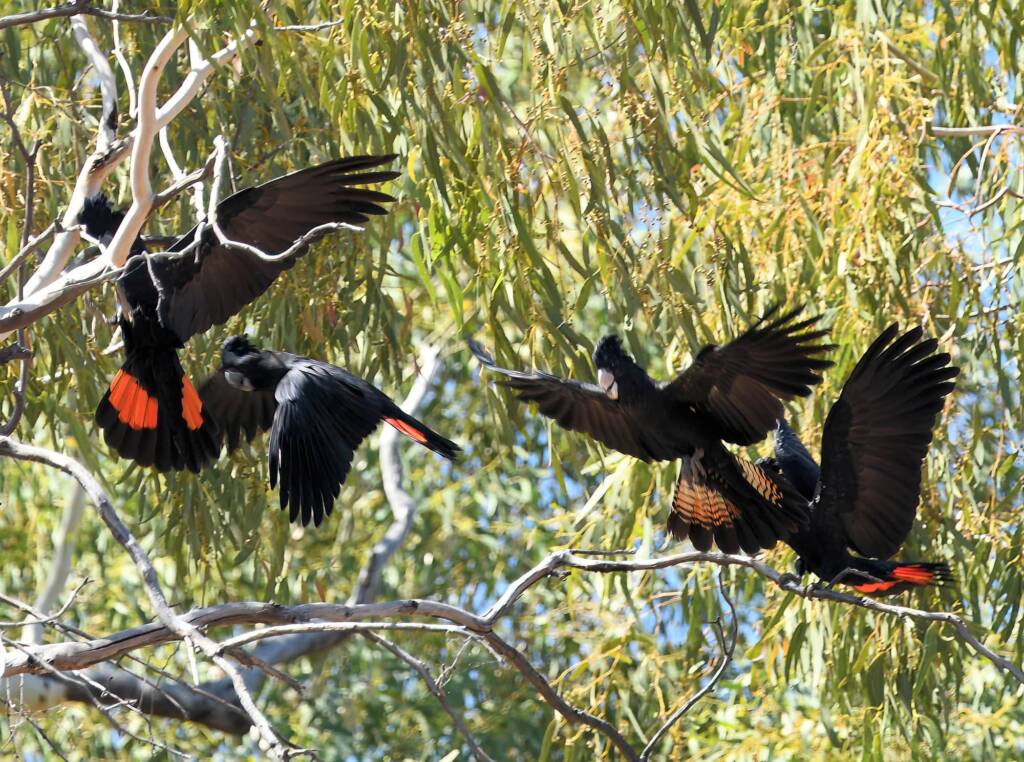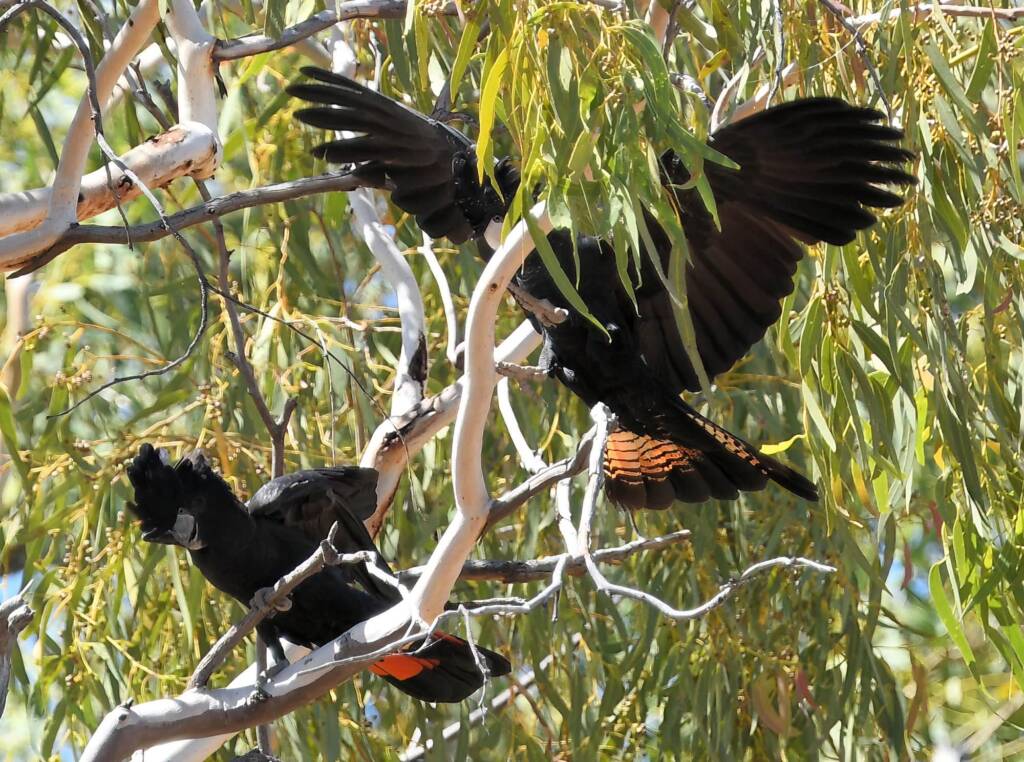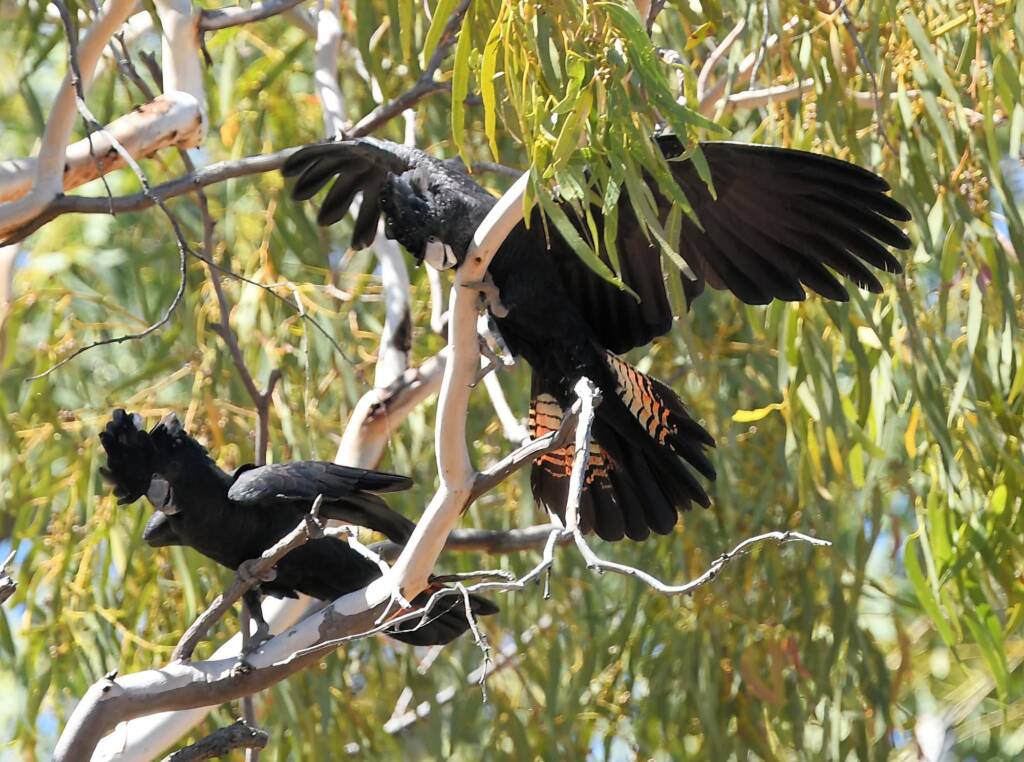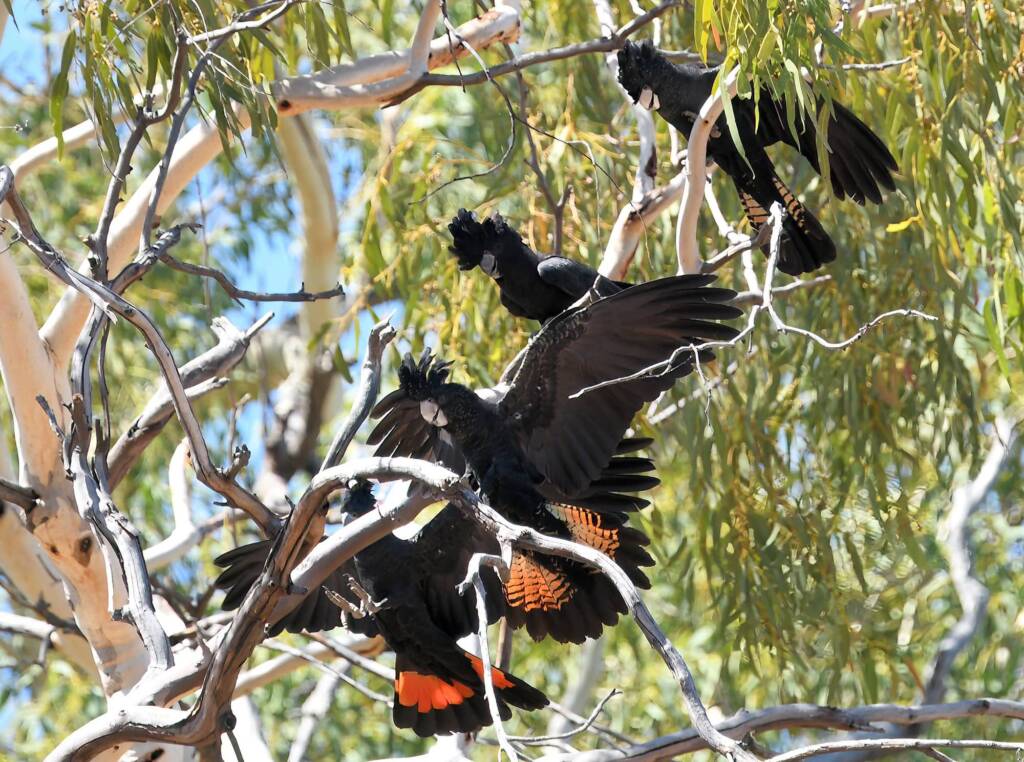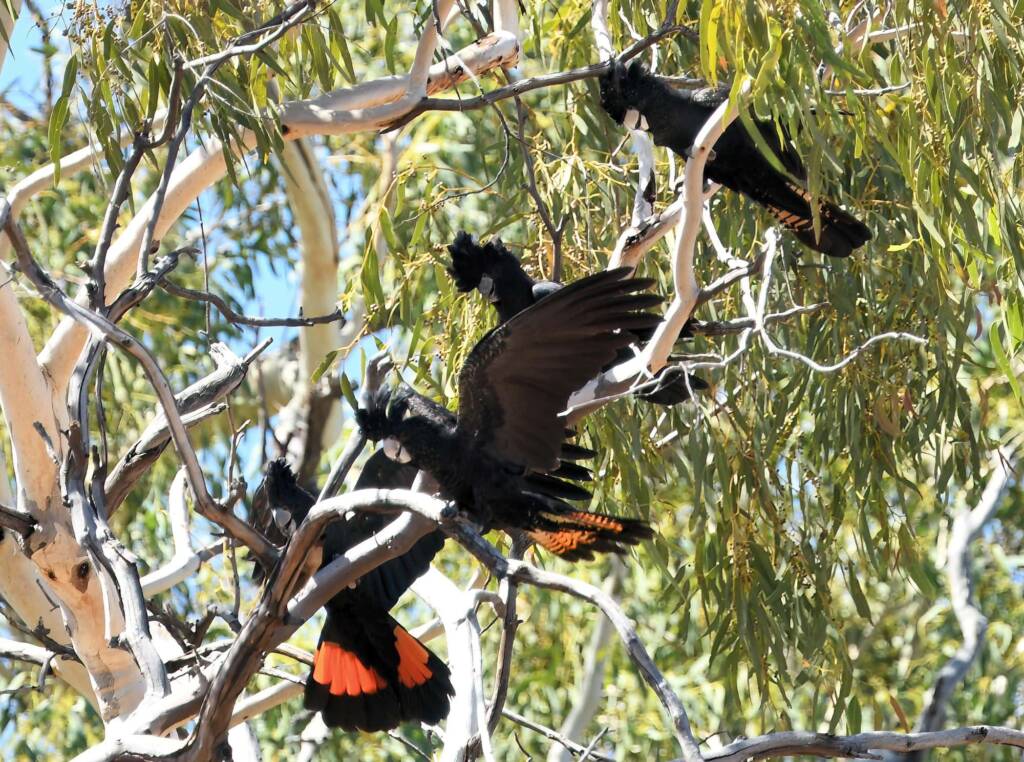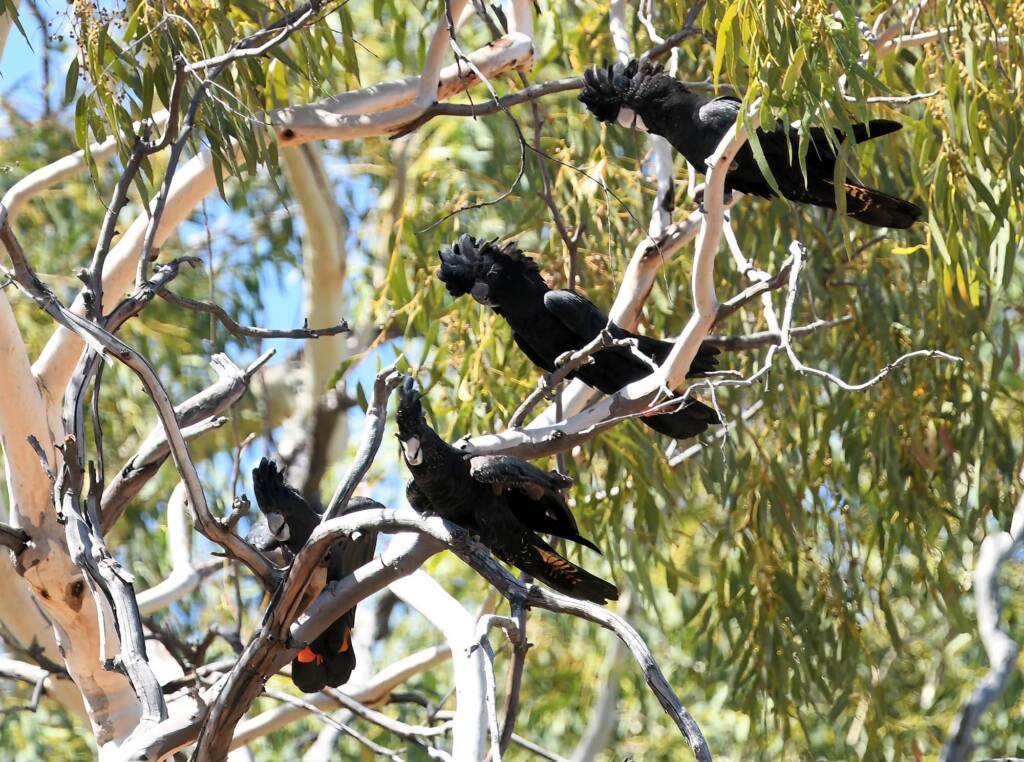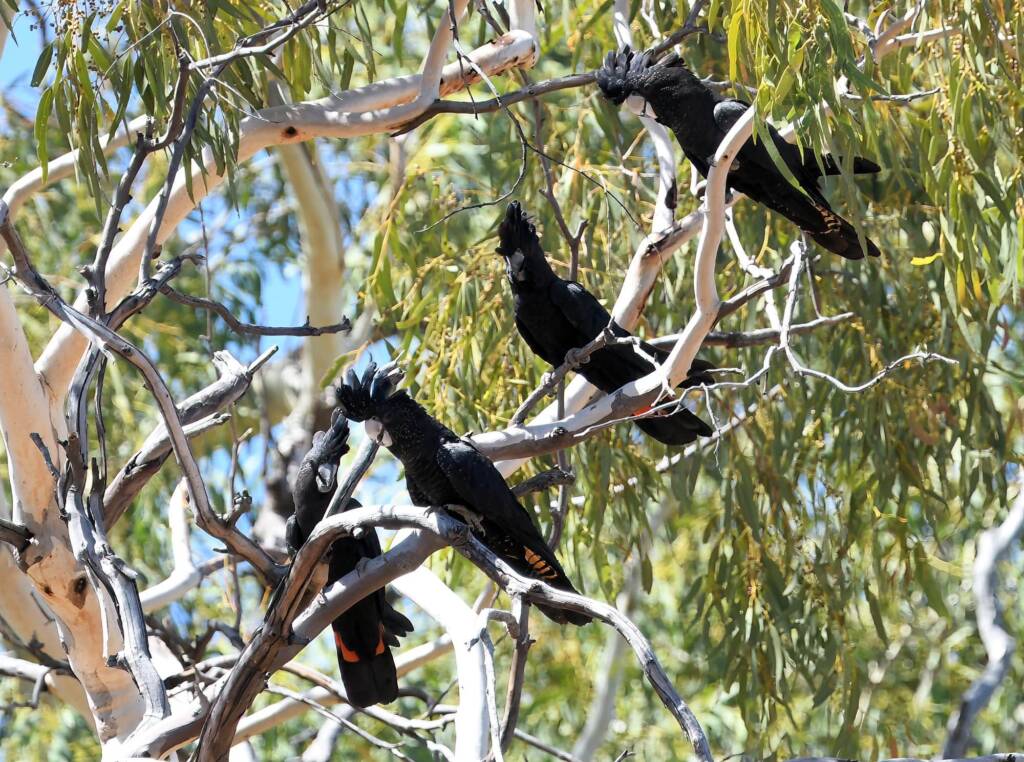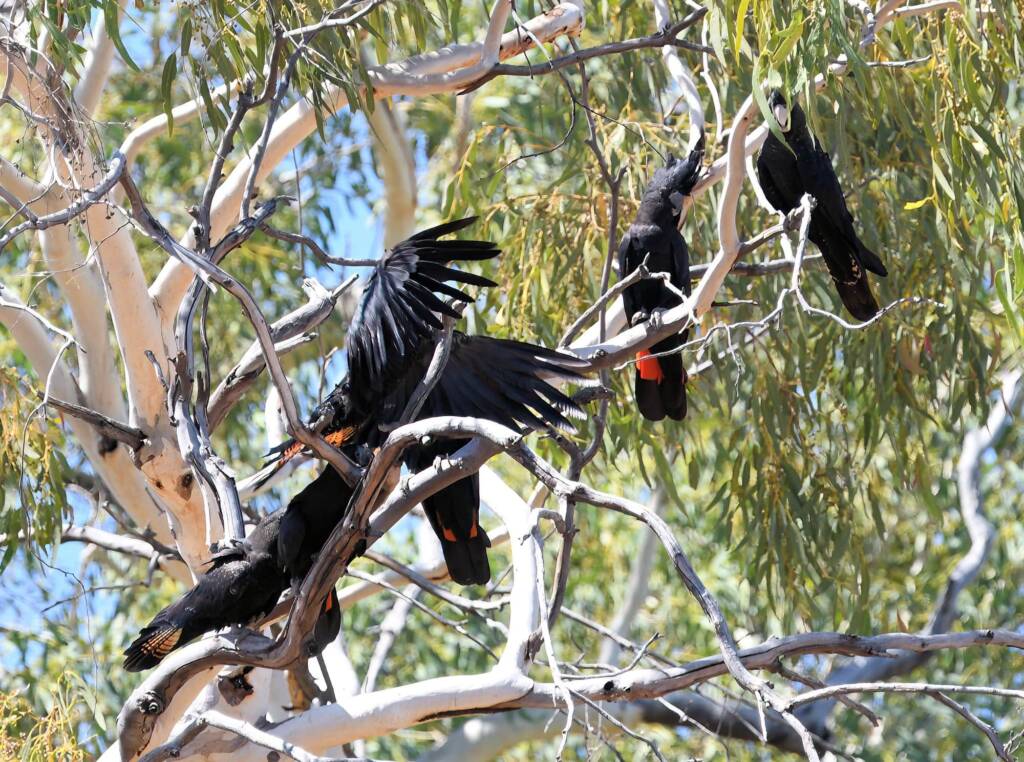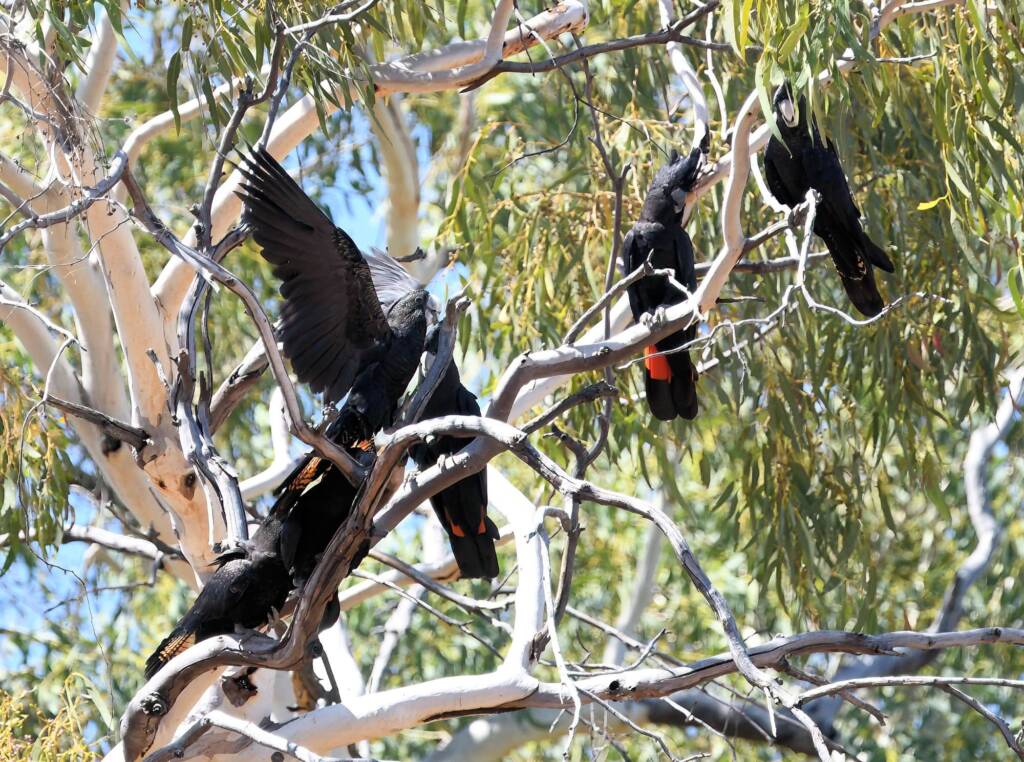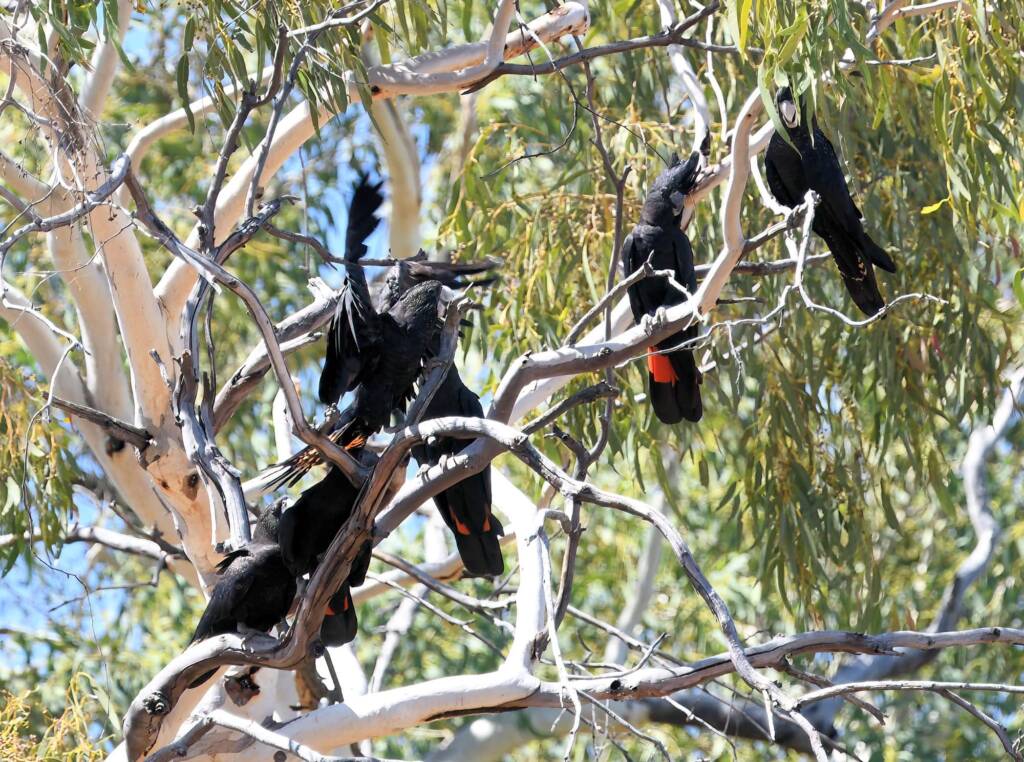Red-tailed Black CockatooRed-tailed Black Cockatoo in flight
The Red-tailed Black Cockatoo (Calyptorhynchus banksii) is a grey-black to glossy black in colour with an erectile crest, that forms a rounded helmet shape when it is raised and pushed forward.
They have a large bill, with the male having a darker bill to the female. The male cockatoo has bright red panels in its tail, whilst the female cockatoo have a more yellow-orange-red barred panels in its tail. The female cockatoo have fine yellow spots on the head with yellow barring across the breast. The juveniles have similar markings to the female cockatoo, with paler yellow barred underparts. This remain until puberty (this occurs around four years of age), when reaching maturity, the male cockatoos yellow tail feathers are gradually replaced with red ones. This process takes approximately four years. The juveniles also have a duskier coloured bill.
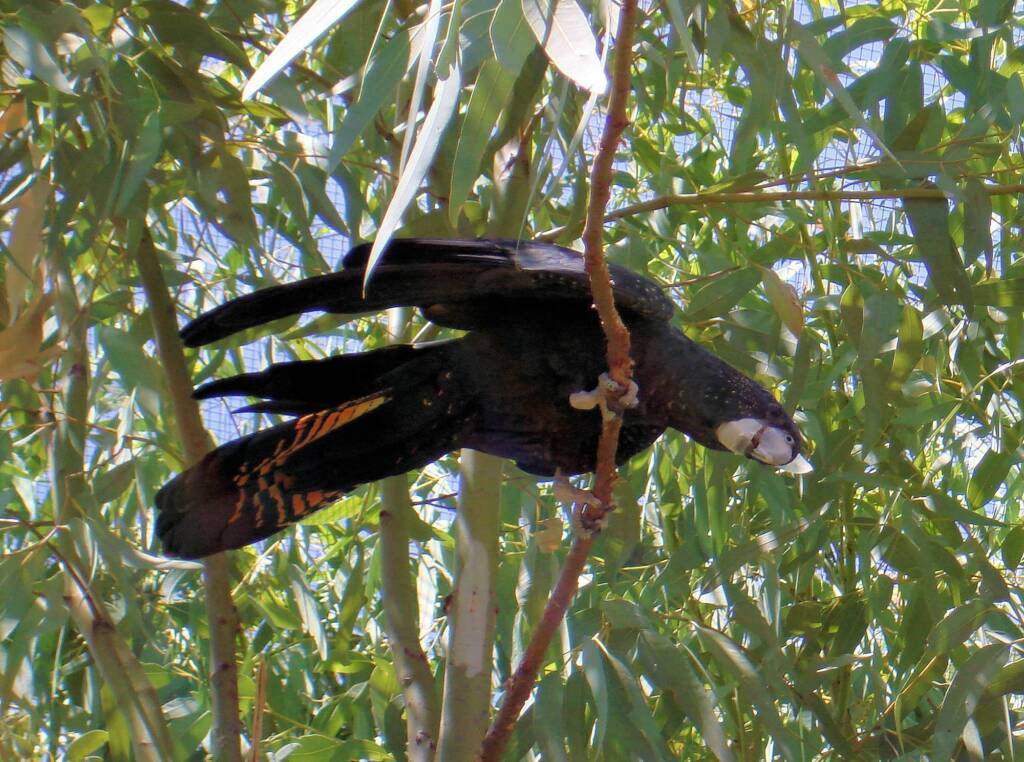
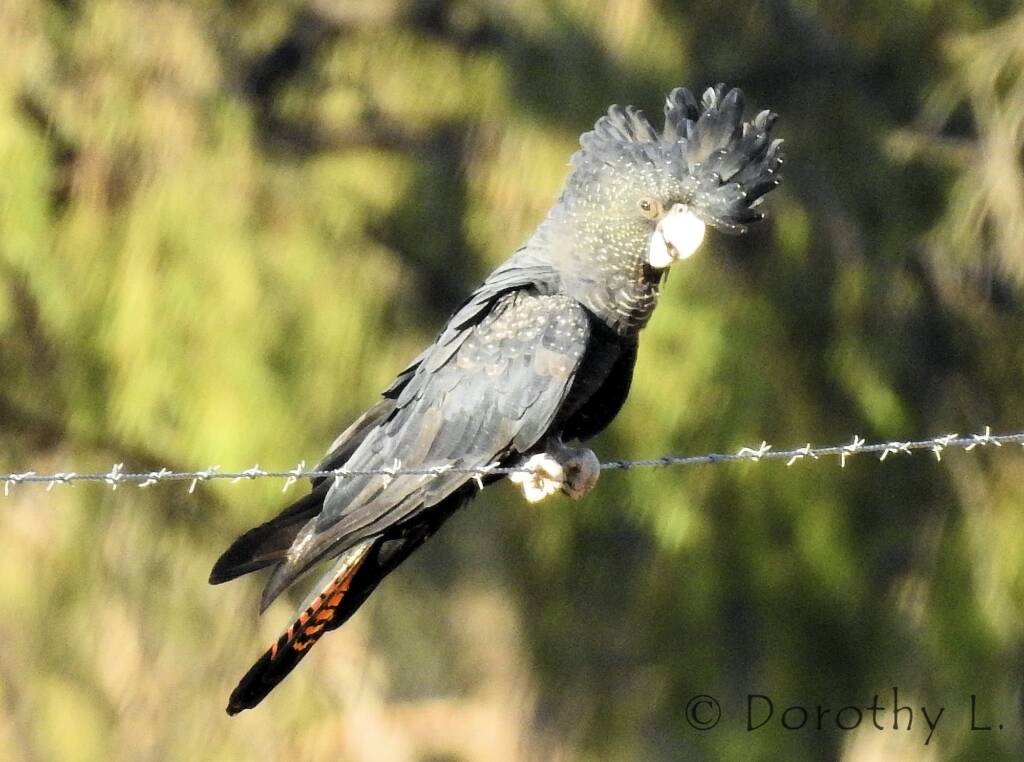
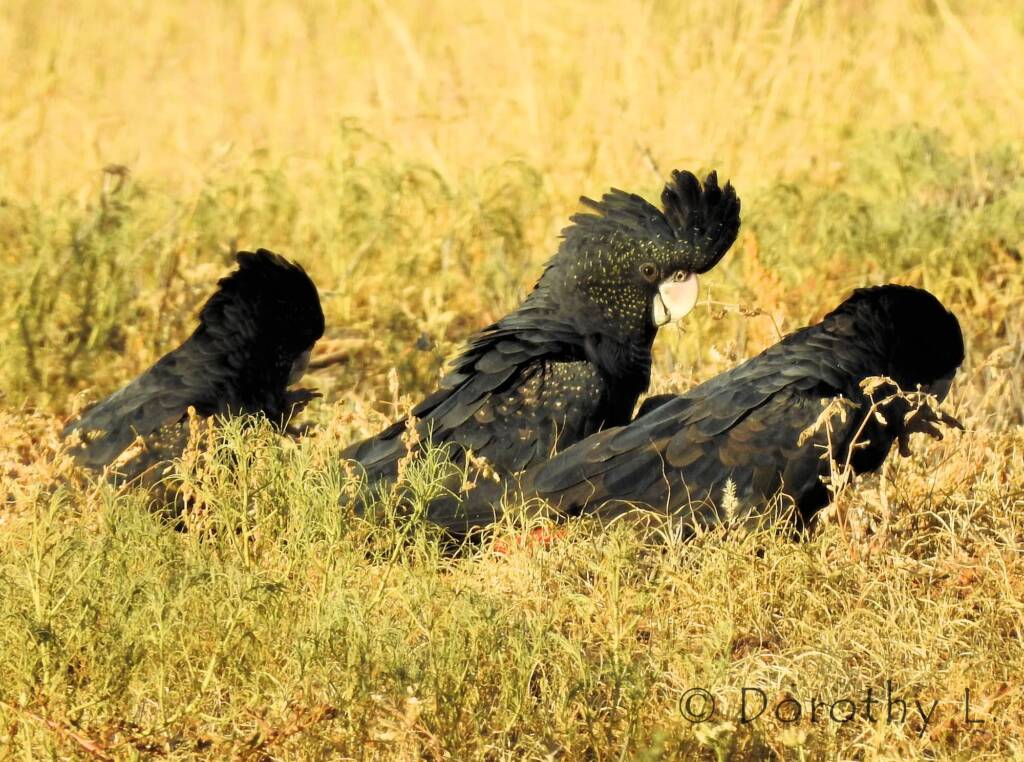
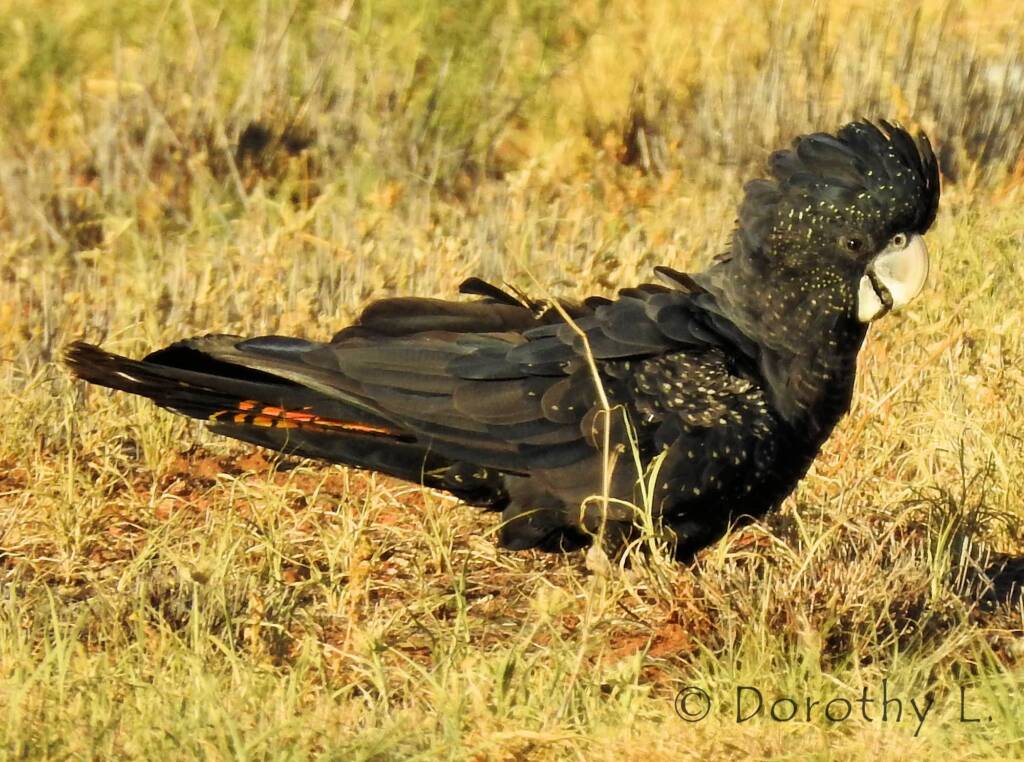
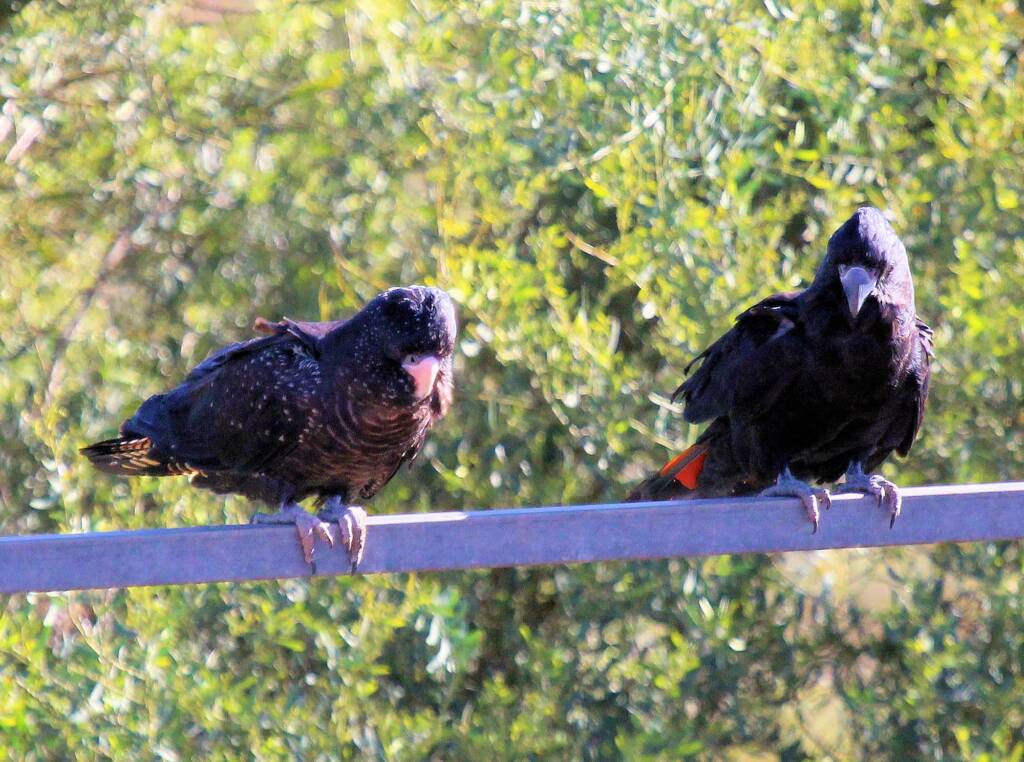
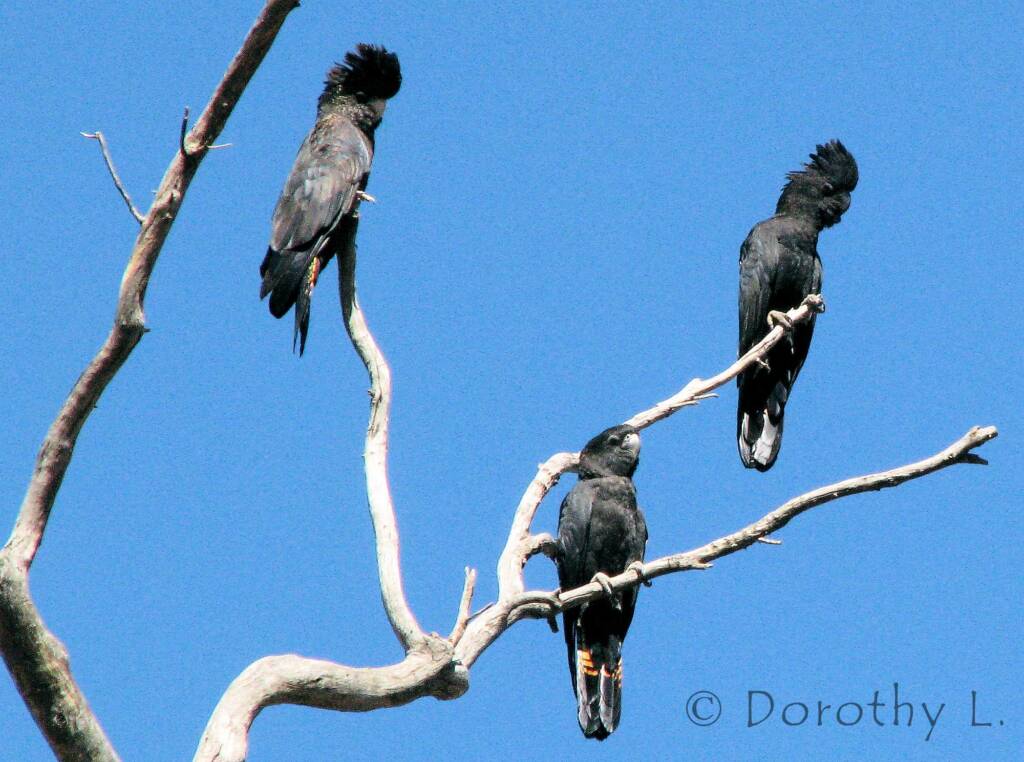
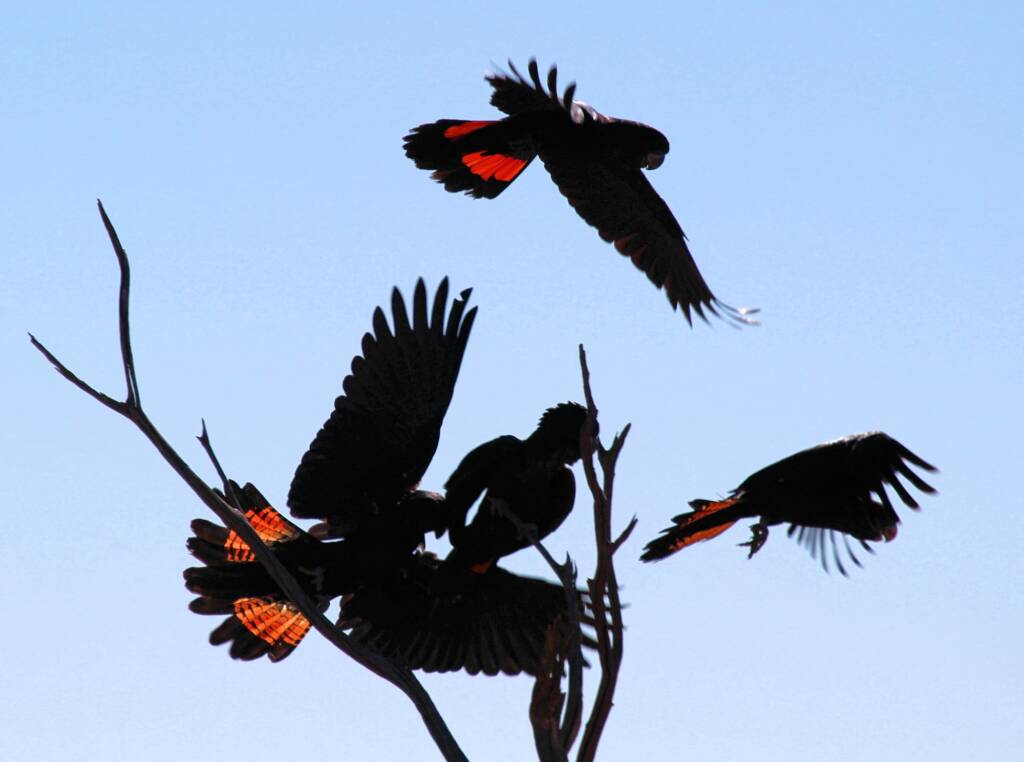
Endemic to Australia, the Red-tailed Black-Cockatoos occur across mainland Australia, with five distinct sub-species in eight discrete populations across the continent.
The Forest Red Tails (Calyptorhynchus banksii naso) are only found in Western Australia, in the south-west region (south of Perth to just east of Albany) and south of Mt Helena to the east of Gingin, mainly along the hilly interior to the King River. This sub-species was named Naso by John Gould in 1837, in reference to its large beak. To the Noongar people (who live in the south-west corner of Western Australia) the bird is known as ‘karrak’.
Common name
Banks’ Black Cockatoo, Banksian, Banksian Red-tailed Cockatoo, Great-billed Cockatoo, Black, Red-tailed Cockatoo, Karrak.
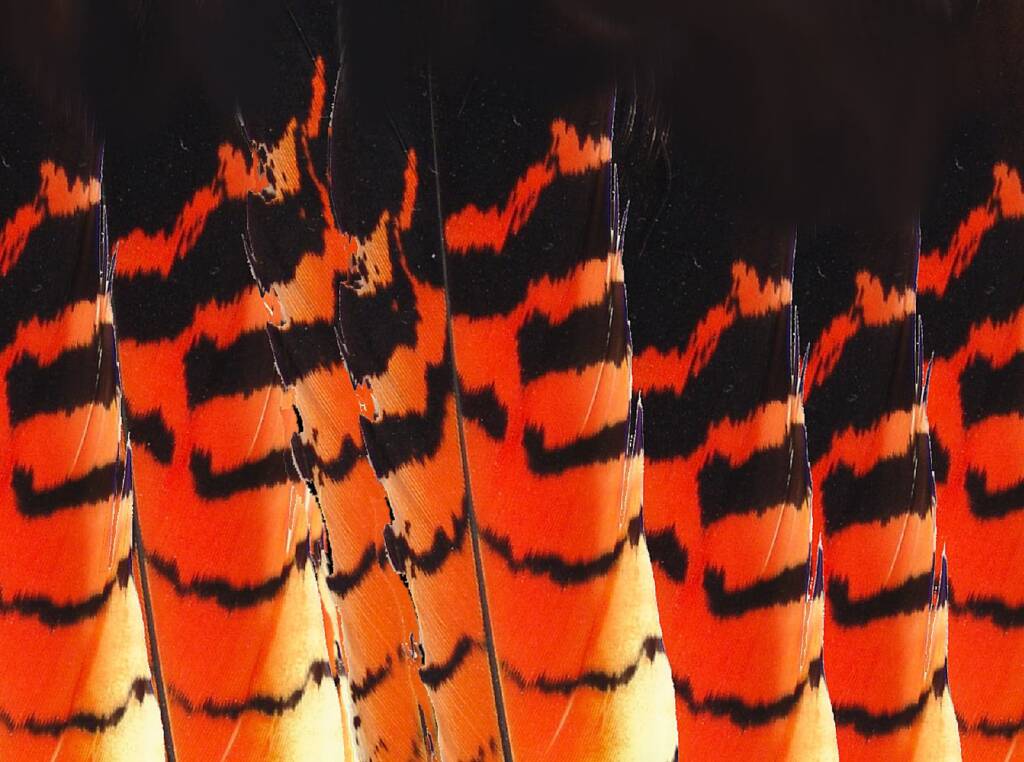
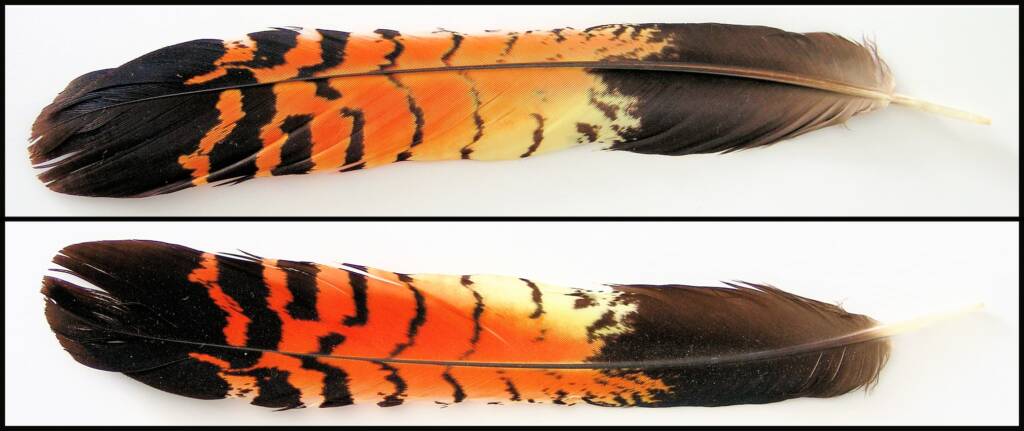
Aboriginal Dreaming and Art
Karrakin (White tailed black cockatoo) acquired its red tail markings on its tail from Ngolak (White tailed black cockatoo).
Ngolak was trying to defend a Dwert (Dingo) which was attacking Djitti Djitti – Willie Wagtail.
Mulal (or Kwirlman) the swamp hen was feeding at the time on a sedge, the roots of which ooze red sap. He cut a reed and struck Ngolak across his back.
When Ngolak spread his tail to protect his back, Mulal threw lumps of red sap at his tail. Ngolak became so hoarse from screaming that he could only vocalize “karrak” instead of the carnaby’s call of “wola”.
Birds of Country, Noongar Djirda, City of Canning, https://www.canning.wa.gov.au/about-us/about-the-area/aboriginal-culture-and-heritage/birds-of-country
The Black-tailed Black Cockatoo also feature in the artwork of Aboriginal artists such a Kukula McDonald, a Luritja woman from Papunya who paints for Bindi Mwerre Anthurre Artists Studio. Other artists include Lindy Rontji from the Hermannsburg Potters and Graham Beasley from the Arlpwe Arts & Culture (Barkly Region).
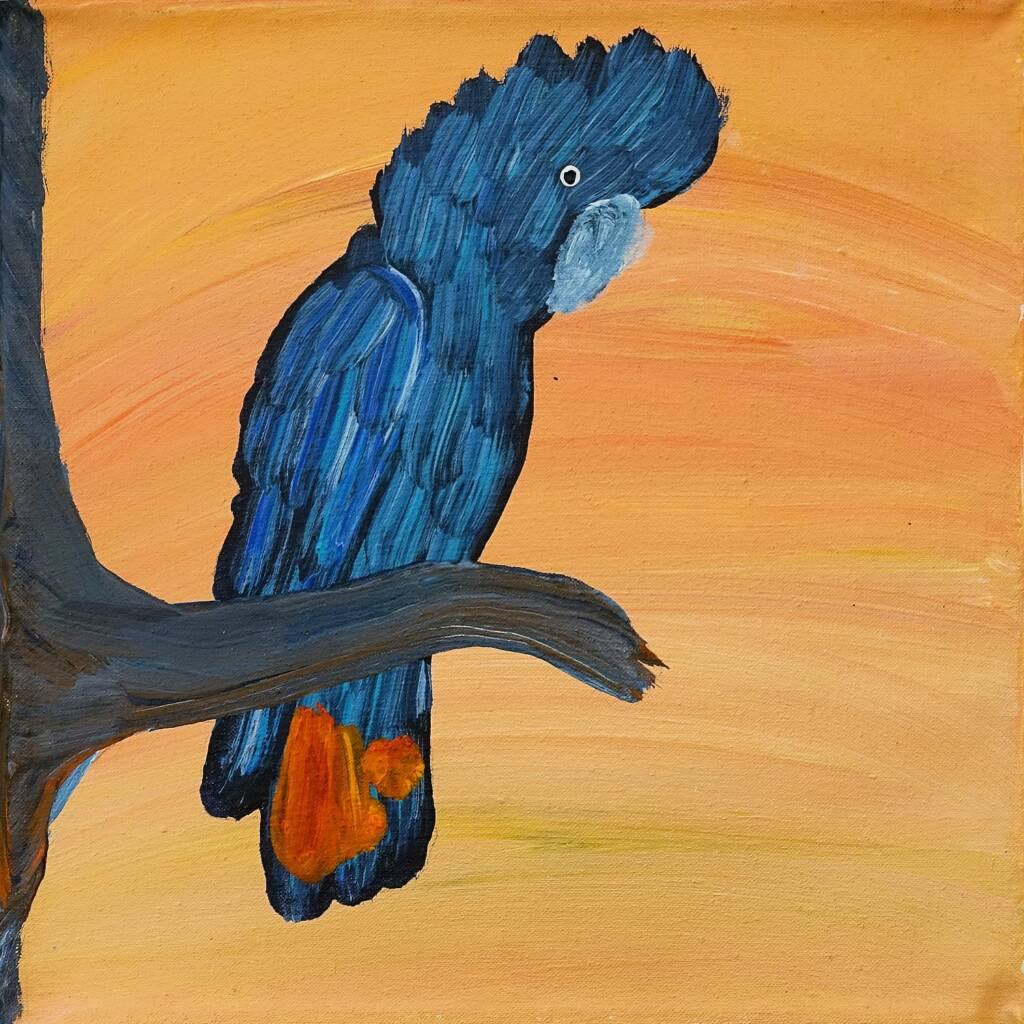
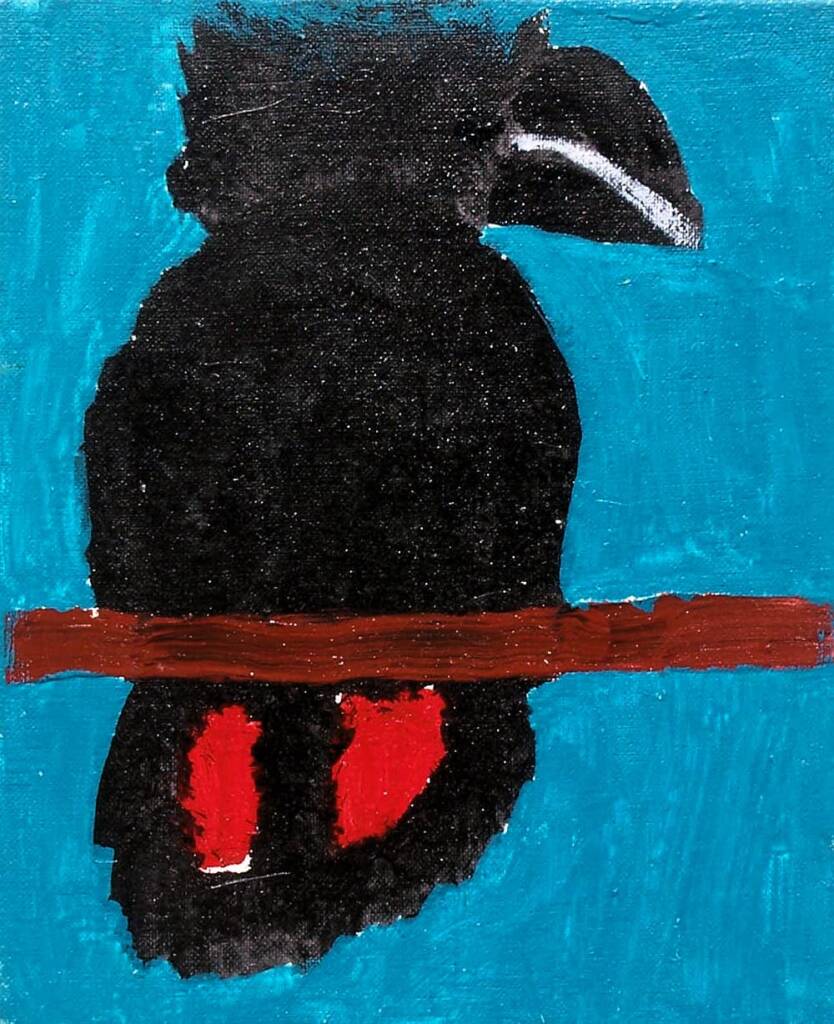
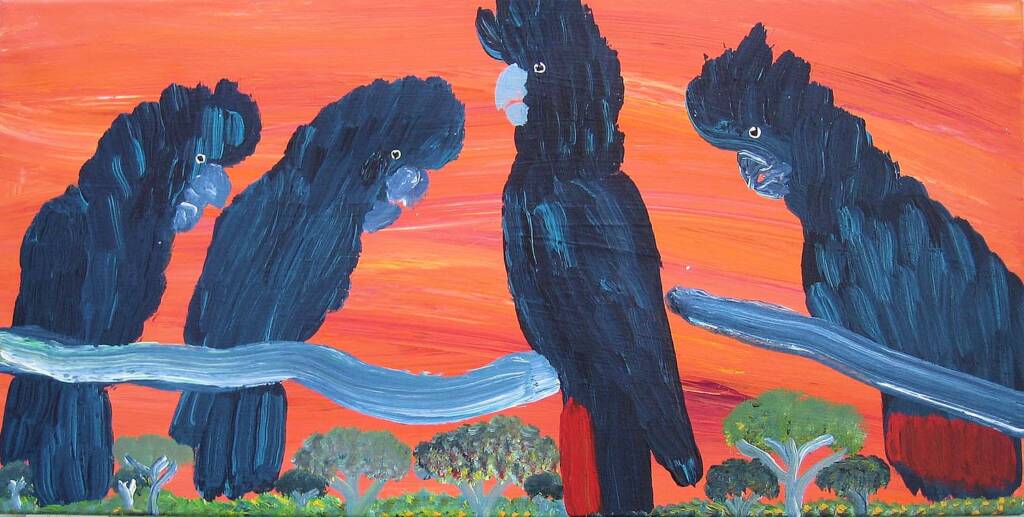
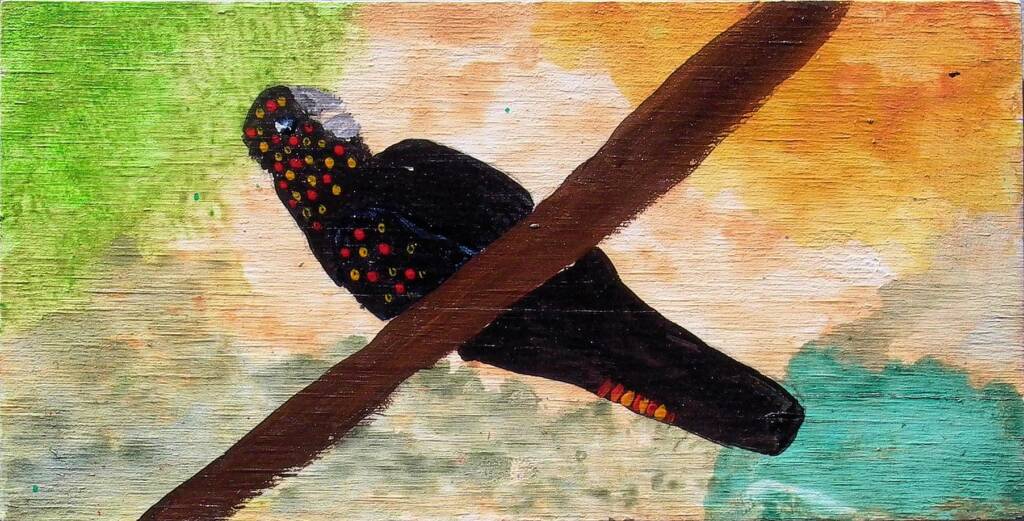
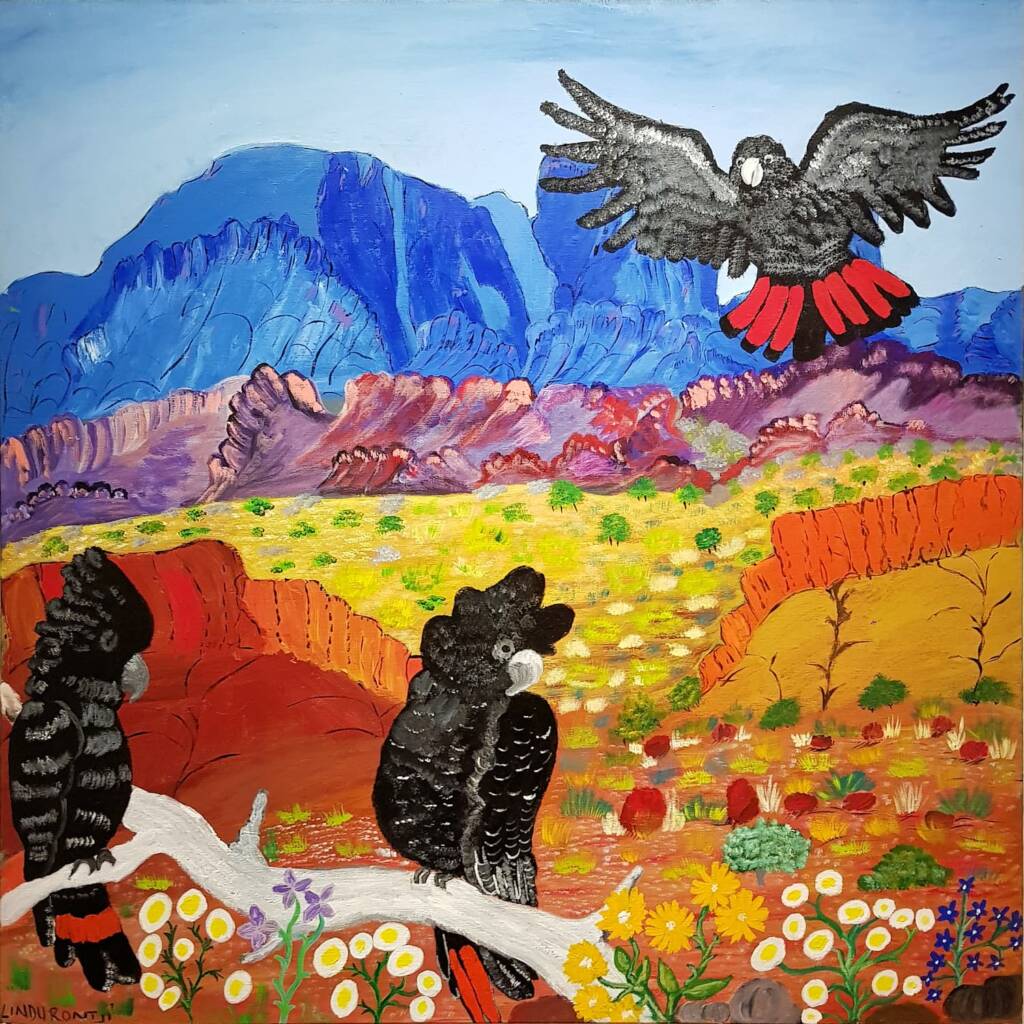
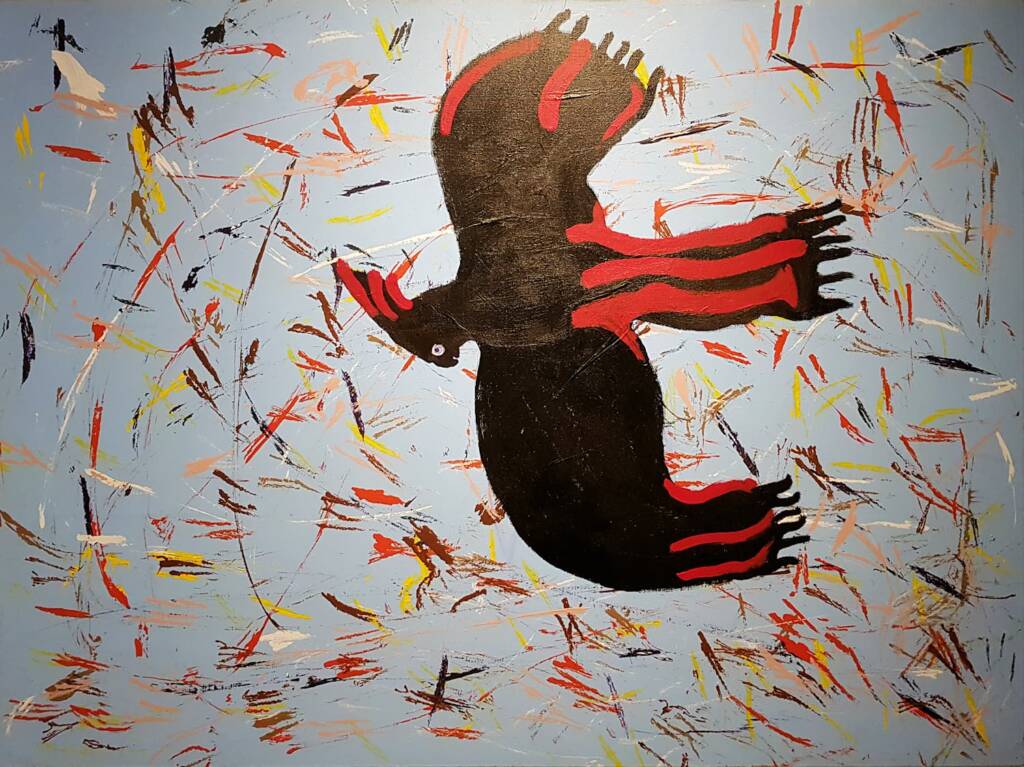
Source: Gallery Gondwana, Araluen Art Centre, Desart Exhibitions
Similar species include the Glossy Black-Cockatoo who have a dark brown head, neck and underbody. The female Glossies have yellow patches on the head. The Yellow-tailed Black Cockatoo have yellow panels in the tail and a yellow patch on the cheeks.
The South-eastern Red-tailed Black-Cockatoo (Calyptorhynchus banksii graptogyne) is only found in south-east South Australia and south-west Victoria and is endangered. The smallest of five subspecies, the female of the South-eastern Red-tailed Black-Cockatoo are the brightest and most boldly marked of females across the subspecies. The bill of the South-eastern Red-tailed Black-Cockatoo is finer than that of other subspecies, which is thought to be due to an adaptation to its specialised diet feeding on seeds from stringybark and Buloke trees (Allocasuarina luehmannii).
The Red-tailed Black-Cockatoos are found in a wide variety of habitats, especially woodlands dominated by eucalypts or casuarinas, and along water courses. They eat seeds and nest in hollows, being dependant on trees with fairly large diameters to the hollow. In the northern parts of the country, they are commonly seen in large flocks, whilst in the arid centre of Australia, the flocks are much smaller.
— click image to see full screen
Check out Owen Springs Reserve > Fauna > Red-tailed Black Cockatoo
- Scientific classification
- Kingdom: Animalia
- Phylum: Chordata
- Class: Aves
- Order: Psittaciformes
- Family: Cacatuidae
- Genus: Calyptorhynchus
- Subgenus: Calyptorhynchus
- Species: Calyptorhynchus banksii
- Subspecies:
- C. b. banksii
- C. b. graptogyne
- C. b. macrorhynchus
- C. b. naso
- C. b. samueli
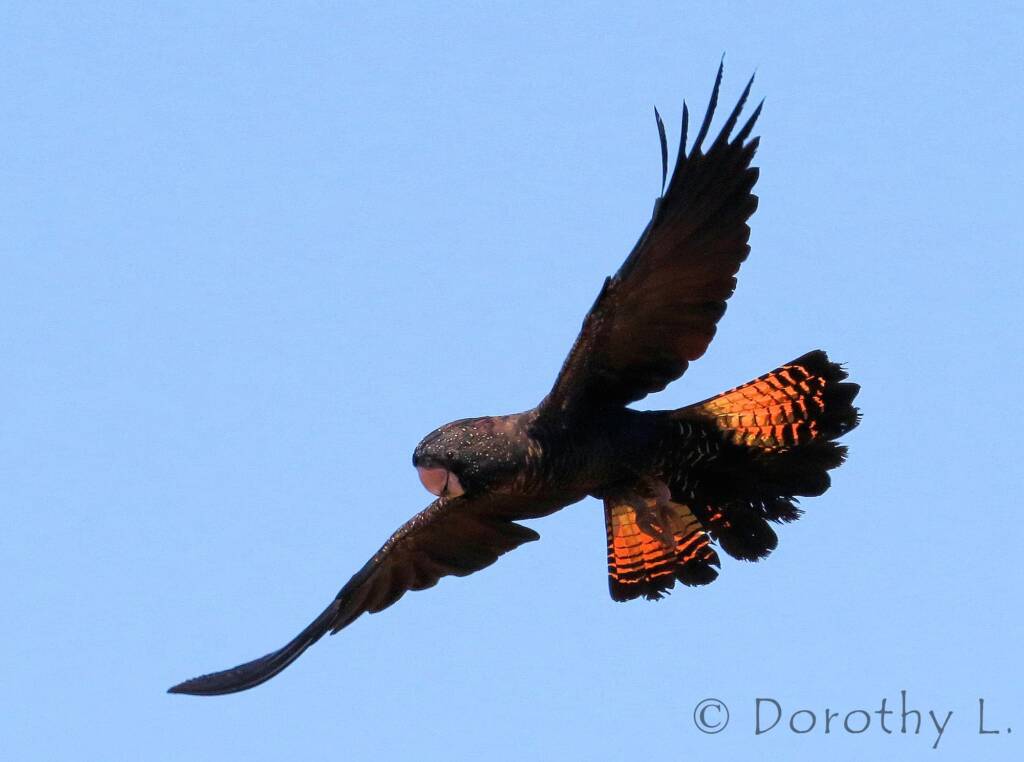
Footnote & References
- Red-tailed Black-Cockatoo, Australian Museum, www.australian.museum/learn/animals/birds/red-tailed-black-cockatoo-calyptorhynchus-banksii/
- Red-tailed Black-Cockatoo (South-eastern subspecies), South-eastern Red-tailed Black-Cockatoo Recovery Project, www.redtail.com.au/
- Forest Red-tailed Black Cockatoo, Western Australia Museum, www.museum.wa.gov.au/explore/online-exhibitions/cockatoo-care/forest-red-tailed-black-cockatoo
- Kaarakin, Black Cockatoo Conservation Centre, www.blackcockatoorecovery.com/cockatoos-and-animals/black-cockatoos/forest-red-tail-cockatoo/
- Forest Red-tailed Black Cockatoo Calyptorhynchus banksii naso, Department of Biodiversity, Conservation and Attractions, www.dpaw.wa.gov.au/images/documents/plants-animals/animals/animal_profiles/frtb_cockatoo_fauna_profile.pdf
- Identify your Black-Cockatoo, BirdLife Australia, https://www.birdlife.org.au/projects/southwest-black-cockatoo-recovery/identify-your-black-cockatoo
- Gallery Gondwana, www.gallerygondwana.com.au
- Araluen Art Centre, www.araluenartscentre.nt.gov.au
- Desart – Desert Mob Exhibition, www.desart.com.au/desert-mob
Red-tailed Black CockatooRed-tailed Black Cockatoo in flight
ParrotsAustralian Ringnecks Bluebonnet Bourke’s Parrot Budgerigar Cockatiel Galah Major Mitchell’s Cockatoo Mallee Ringneck Mulga Parrot Port Lincoln Ringneck Purple-crowned Lorikeet Rainbow Lorikeet Red-collared Lorikeet Red-tailed Black Cockatoo Sulphur-crested Cockatoo Yellow-tailed Black Cockatoo

